First of all, a happy new one to all!
My first contribution of the year is a report of a flight done between Christmas and New Year.
December has been rather warm in Germany. It was only just after Christmas that some massive cold weather and some snow moved in from the North. However, just after that, a nice high pressure area started to develop over the Northwest of Europe. Germany was mostly sub-zero at that point and also the neighbouring countries.
So, where to go, with most places freezing, making “stays” somewhat unpleasant? Well, if places like the Cote d’Azur and Liguria are out of the question, then the warmest place in the winter is usually the Scilly Isles. However, that is really at the edge of European travel.
The Channel Islands are a bit closer and only a tiny bit less warm. Also, I had been to the Scillies before, but not really (except for fuel stops) to one of the Channel Islands: Guernsey.
The weather was looking very good for Guernsey (lots of sunshine) and the peak temperatures were just below 10 degrees. Some great seafood was on promise. Add to that some of that cheap Channel Islands flavour of 100LL. And finally, a fantastic tailwind was looming for our outbound flight. That fixed the destination.
By the way, I only started doing winter “trips” about two or three years ago. Before that, I believed that it was not feasible in terms of weather. However, I then slowly understood that winter weather in Europe is much much better than its reputation and flights were very doable, at least if able to fly IFR.
Departure was to be from Luebeck (EDHL), with the SR22. The flights brought up some interesting operational points and also, I have a few good tips for the Isle of Guernsey to share, so here we go.
First, as always, the weather picture. Here’s the prog chart for the day of departure, as shown the day before:
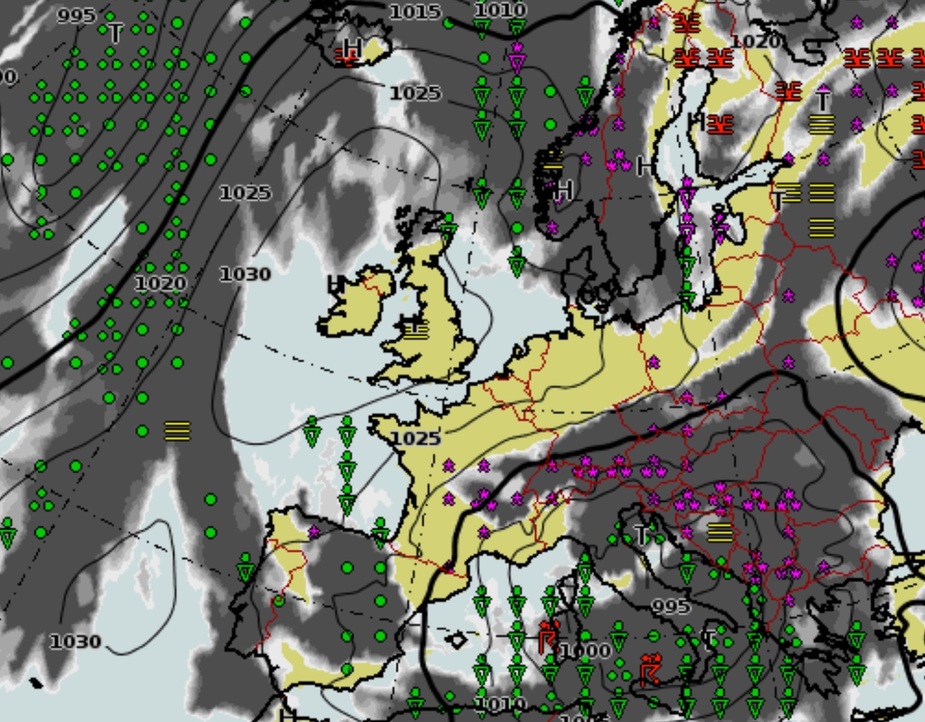
Correspondingly, a clean satellite image on the morning of departure:

And an even cleaner radar image:
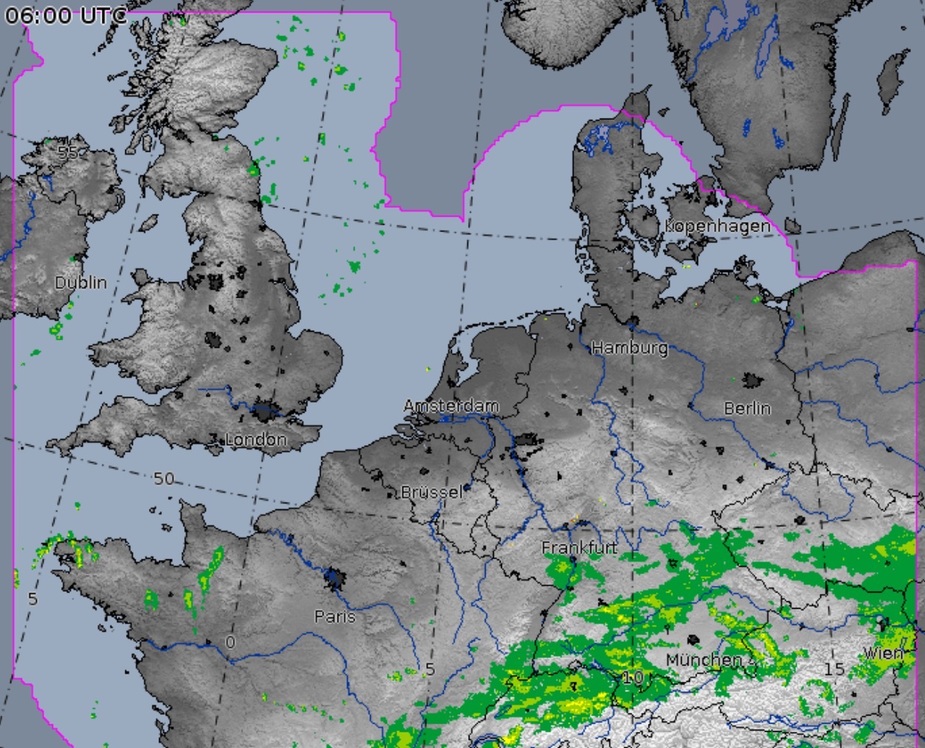
To add some variation, we decided to make a lunch stop at Ostende on out outbound flight. Anyway, IFR routings for these kinds of flights always generate some overhead, since there are no airway routings crossing through the centre of the Netherlands and one is forced to file via Eelde (EEL), but from experience, I knew it normally worked out much better in practice, so this is what was filed, at FL100:
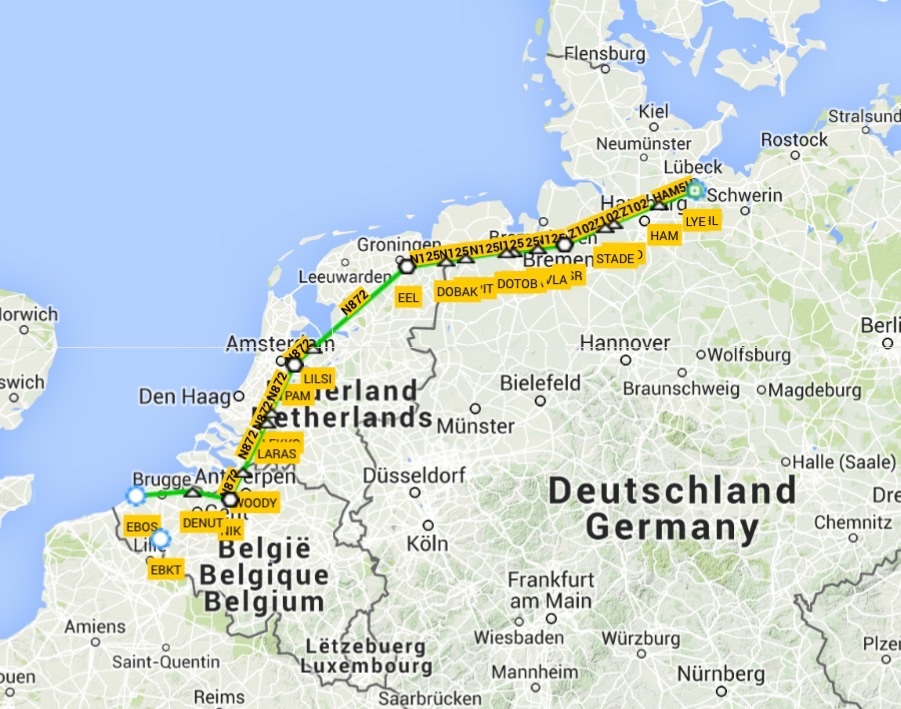
And finally, the wind. The forecast was a sight to behold, for this particular flight. 

Flight time to Ostende was thus calculated to be about one hour and fifty minutes.
The night before departure had been blisteringly cold in Luebeck, about -6°C. When we arrived at the airport at 9 o’clock, the temperature had risen to -2°C. Some snow was on the ground, but fortunately, access to the hangar was not a problem.
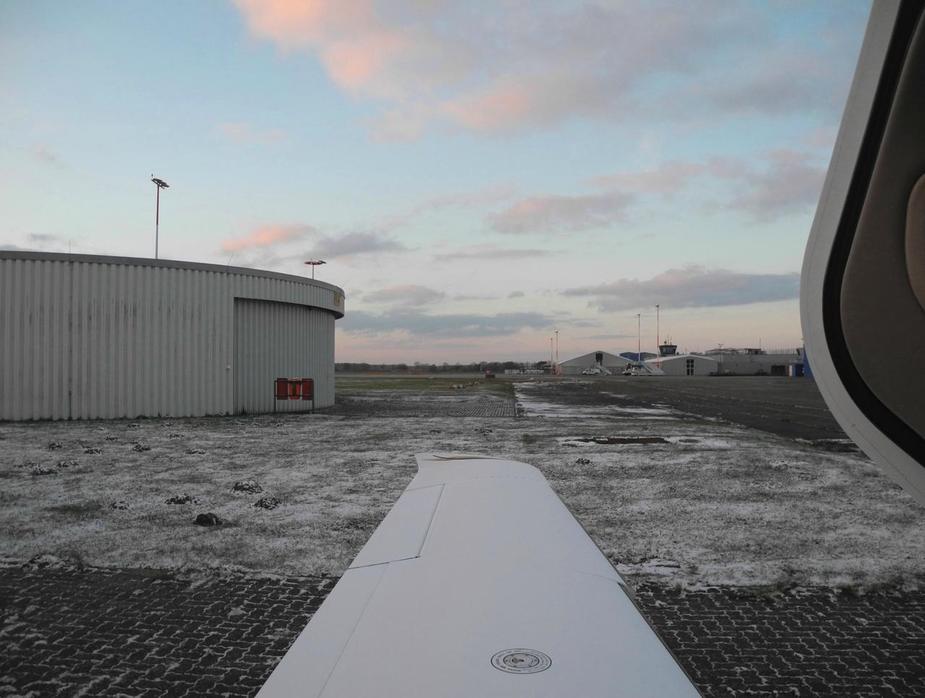
Cold starting the engine ín sub-zero temperatures sure isn’t the best thing to do, but for most of us, there just isn’t any practicable alternative. What I found out is that I needed a lot of prime to keep the engine running after the first few revs. This is a bit tricky in our aircraft, since when you fail a cold start on the first attempt, and when you then try to re-prime the engine, the fuel pump will sometimes not manage to build up fuel pressure again. It was thus a case of waiting a couple of minutes until the residiual fuel in the lines had vapourized and then re-priming the engine a second time, this time with about 10 seconds on the primer primp. Next time, I will remember to prime it more agressively right from the start.
Despite the strong northeast winds aloft, the surface wind at the airport was calm and runway 25 was in use. This was great, since it would allow us to take-off just in the right direction and take advantage of the tailwind immediately.
After level-off at FL100. We were very soon cleared direct to Pampus (PAM) VOR, near Amsterdam, which was good.
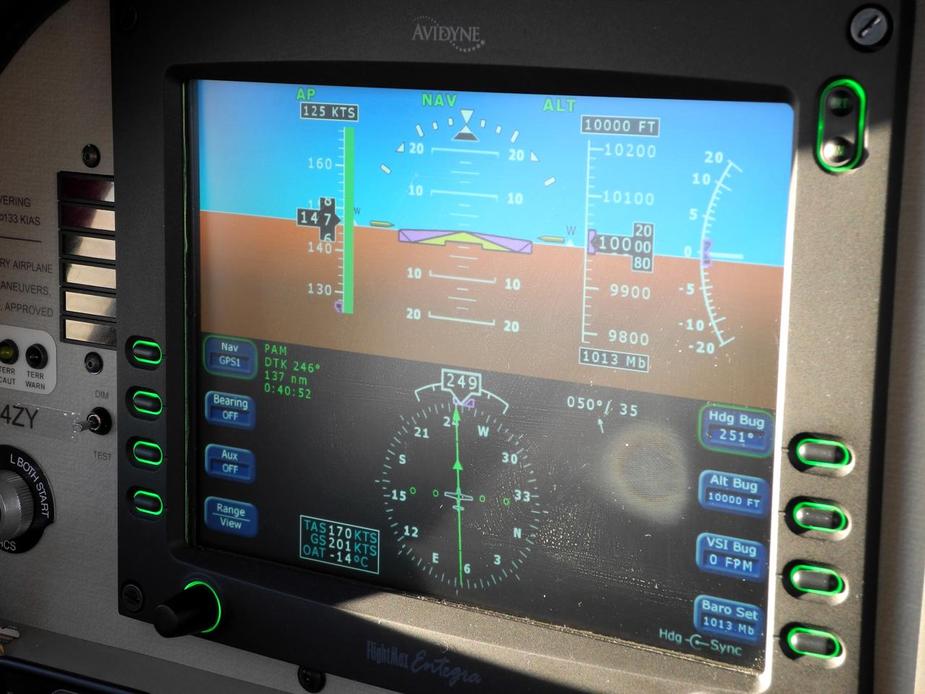
Here we are, crossing through the northwest of Germany Looks cold down there, doesn’t it?
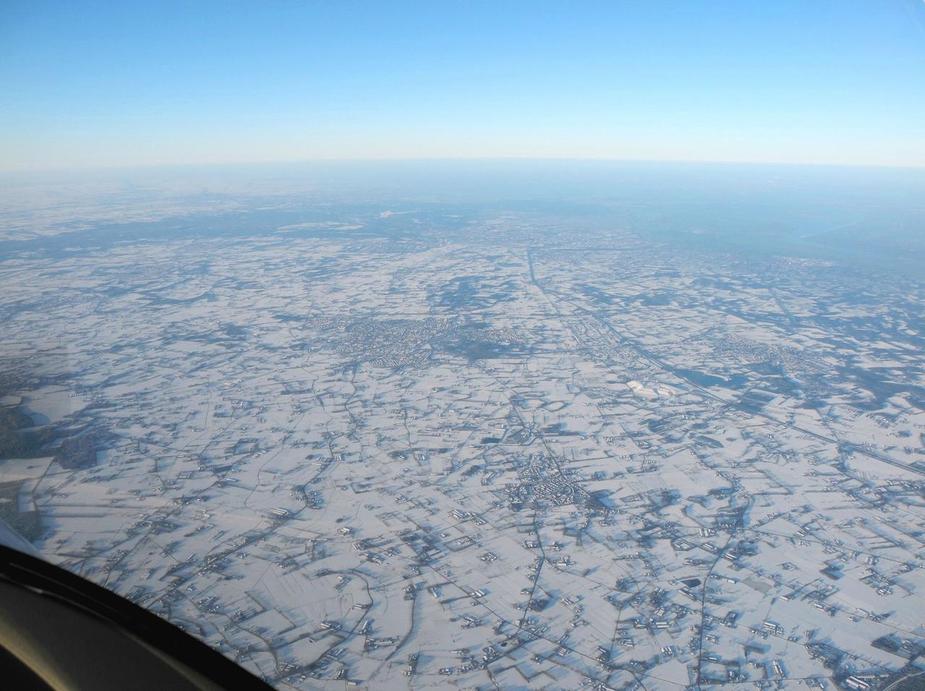
As you could see on the MFD shot, the OAT was -14°C. While the heater and circulation system in the Cirrus is generally OK and managed to heat up air inside the cabin nicely, the problem with flying after such a cold night is that the cabin is totally cold-soaked, so much that it takes hours to thoroughly warm it through. This applies particularly to the backrests of the seats. These simply become blocks of ice, making the occupant feel cold on his back. Short of pre-heating the cabin, I have found no solution to this. An electrically heated blanket might help. I will try something like that next time.
We were then cleared all the way to WOODY, which is on the FIR boundary between the Amsterdam and Brussels FIRs. This put is somewhat to the south of Amsterdam airport. Nevertheless, we managed to spot a traffic coming on to EHAM from the west.
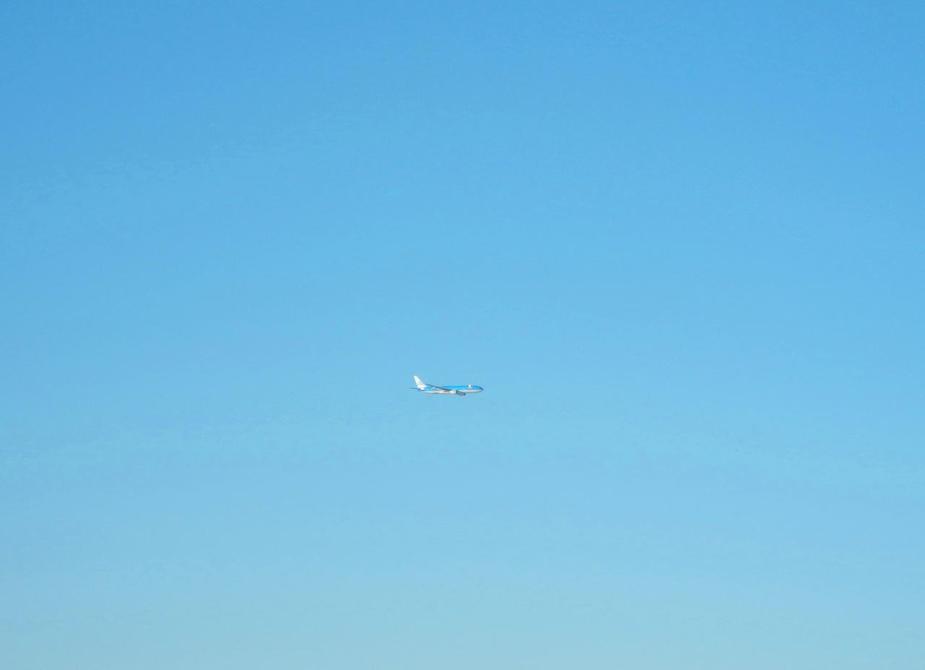
Rotterdam in the background.
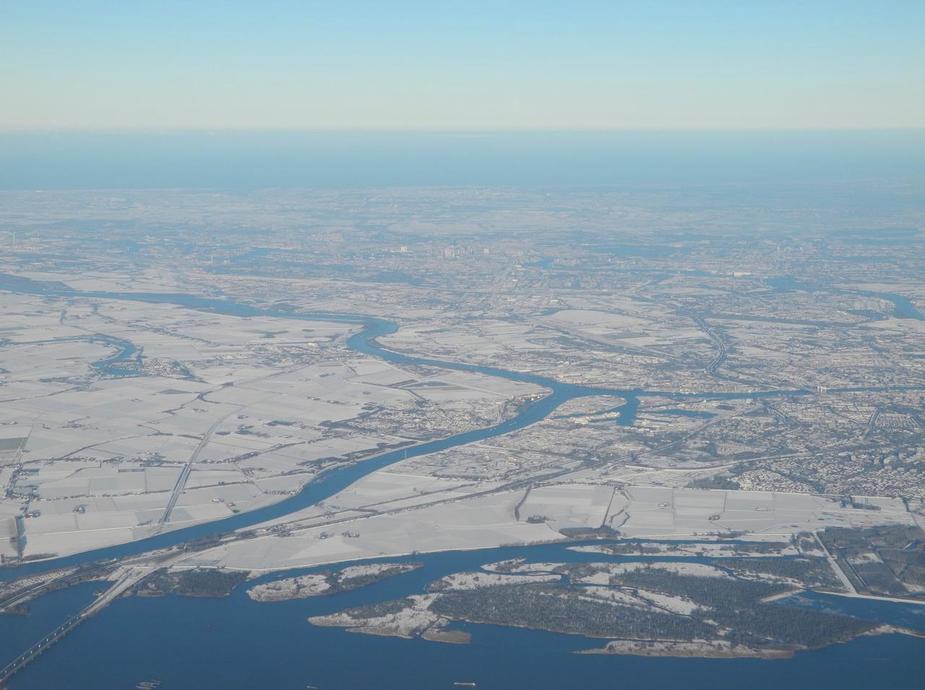
The west of the Netherlands is characterized by numerous waterways, sounds, peninsulas and islands.
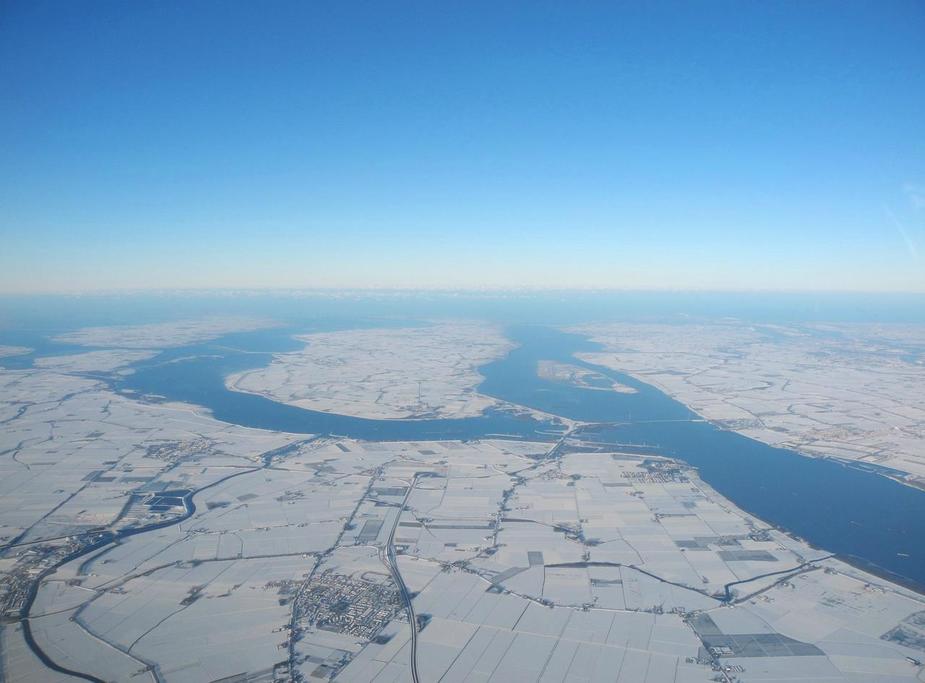
The wind was perfect and gave us up to 35 knots of extra speed.
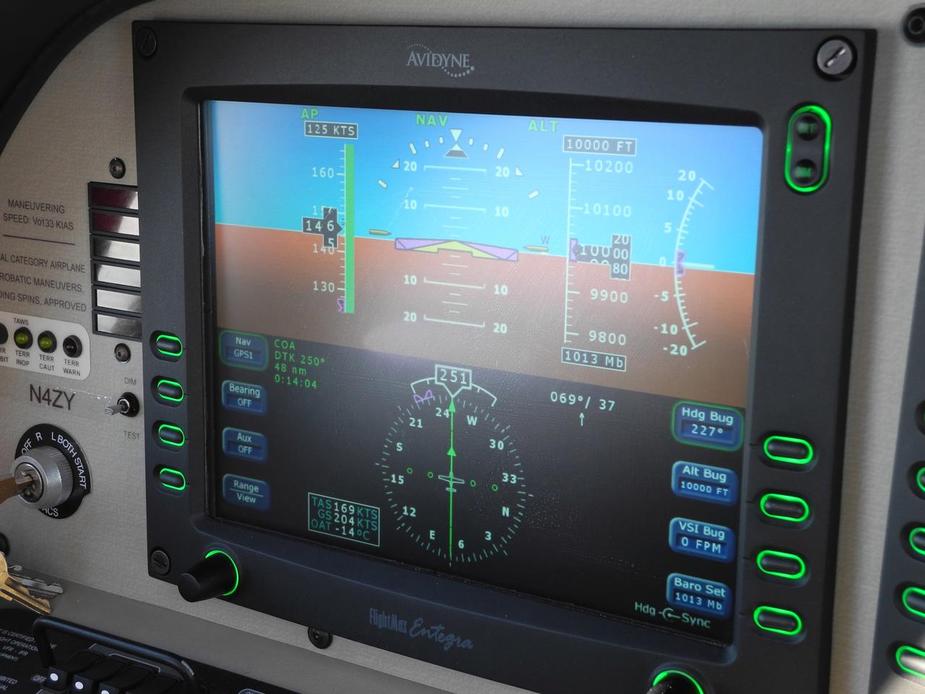
Right as we crossed the border to Belgium, the snow disappeeared. Here are Knokke-Heist and Zeebrügge.
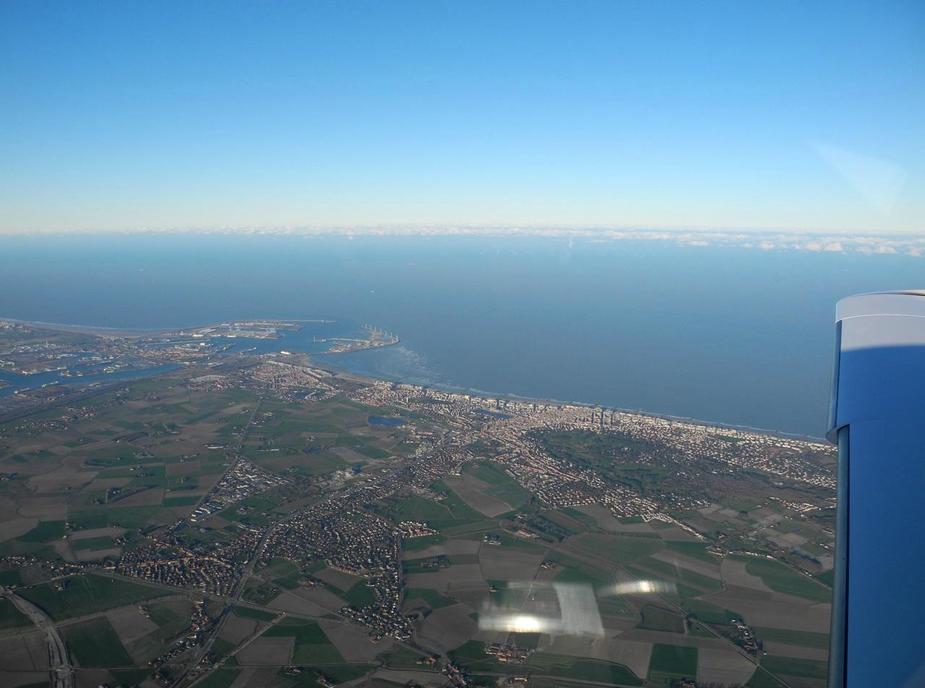
Here in Belgium, the surface wind was more noticable and obviously out of the northeast. Hence, runway 08 was in use at Ostend. Since Ostend often has very little traffic, I enquired if we could do the ILS to runway 26 with a circling to runway 06, which was approved. The approach controller merely said to stand by briefly since he had to “switch the equipment”. Apparently, they do habitually switch off the ILS signals “on the other side”.
Blasting down the ILS at 200 knots GS.
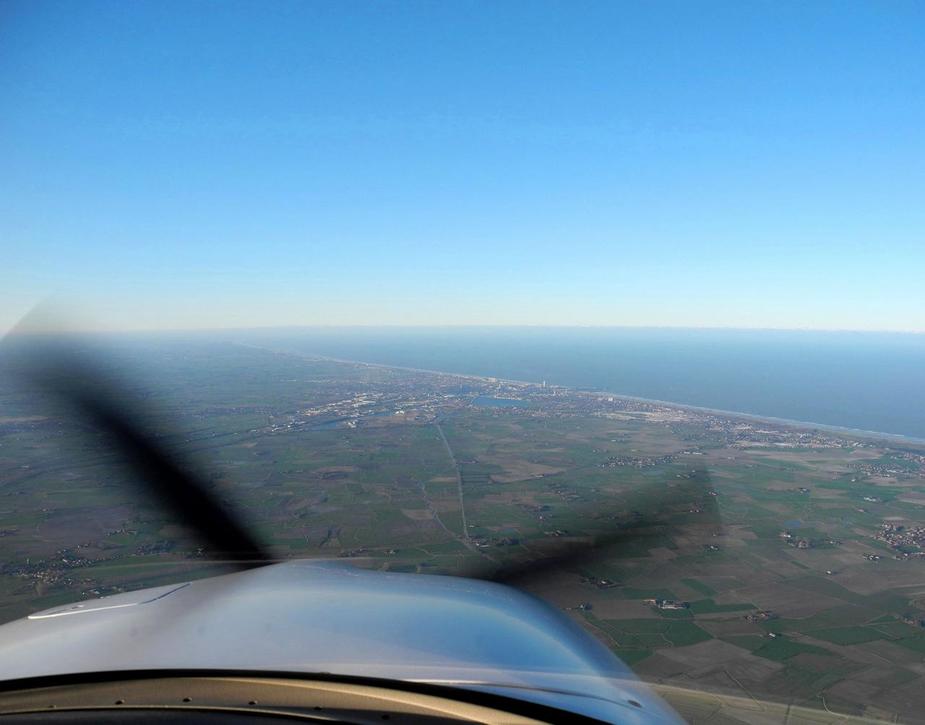
We broke off the ILS approach at 4 miles and were asked to fly a left hand circuit for runway 08. This gave us a nice view of the centre of Ostend. Check the marina, the harbour, the cathedral, the train station and the beach.
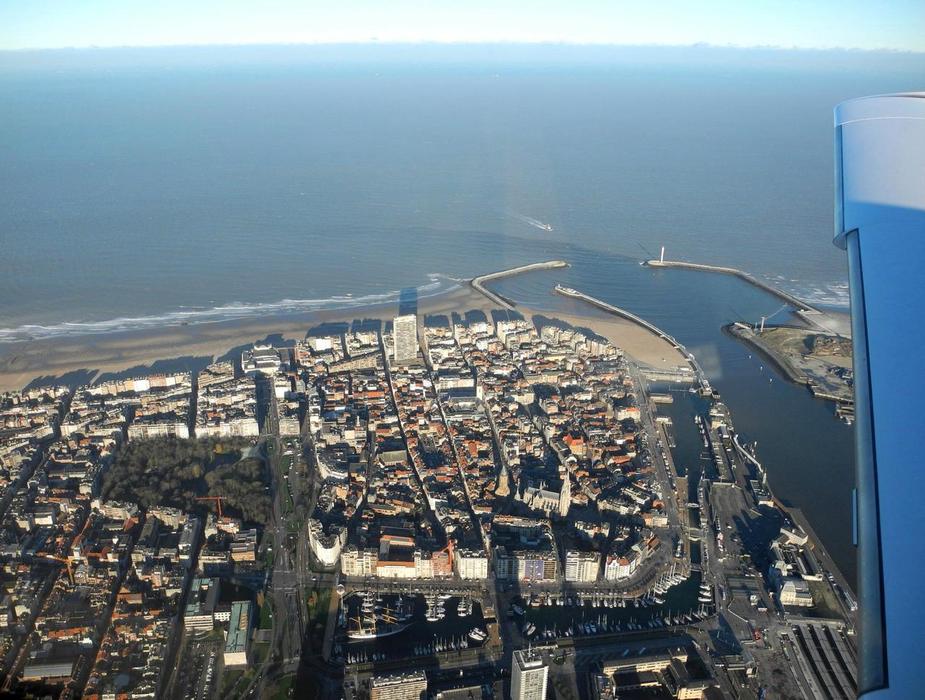
Downwind.
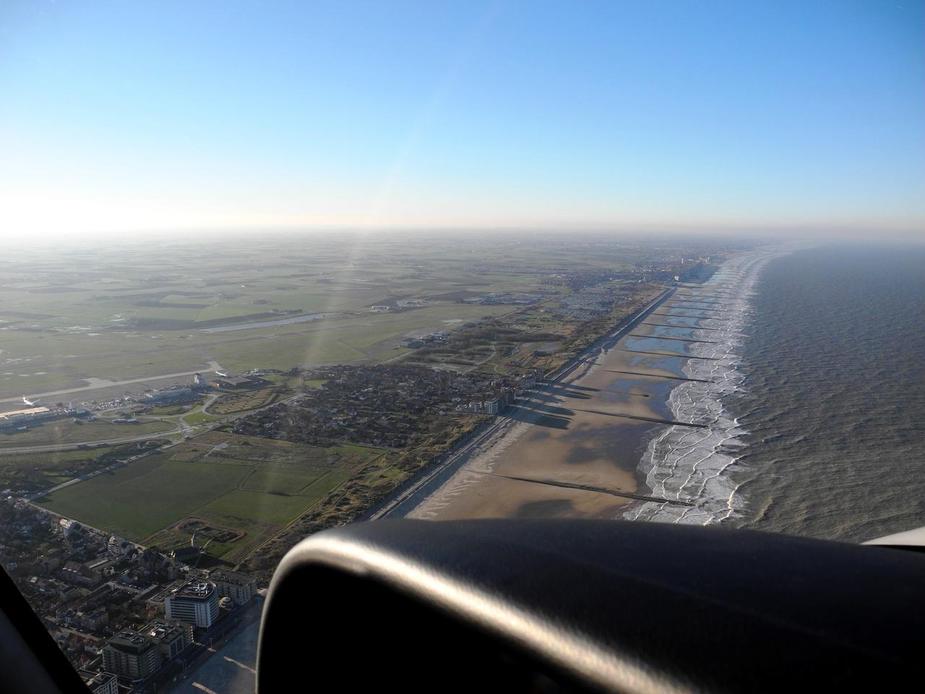
After landing, as usual, we were parked at Apron 3 and then pickup up by a ramp bus. Bizzarely, after arriving at Ostend, crew and pax have to go through security checks, before they can enter the main apron. This applies even when one is headed straight out of the airport, just like us in this case. Totally stupid, but it all happened with a smile on the face, so no major problem. We were also lucky in that the bus into town arrived just in time for us. I love airports with good bus connections!
Despite the cold temperatures and the cold wind, we walked the entire length of the Visserskaai, the harbourfront street of Ostend.
Here’s the cathedral (sorry for cutting the tips  ):
):
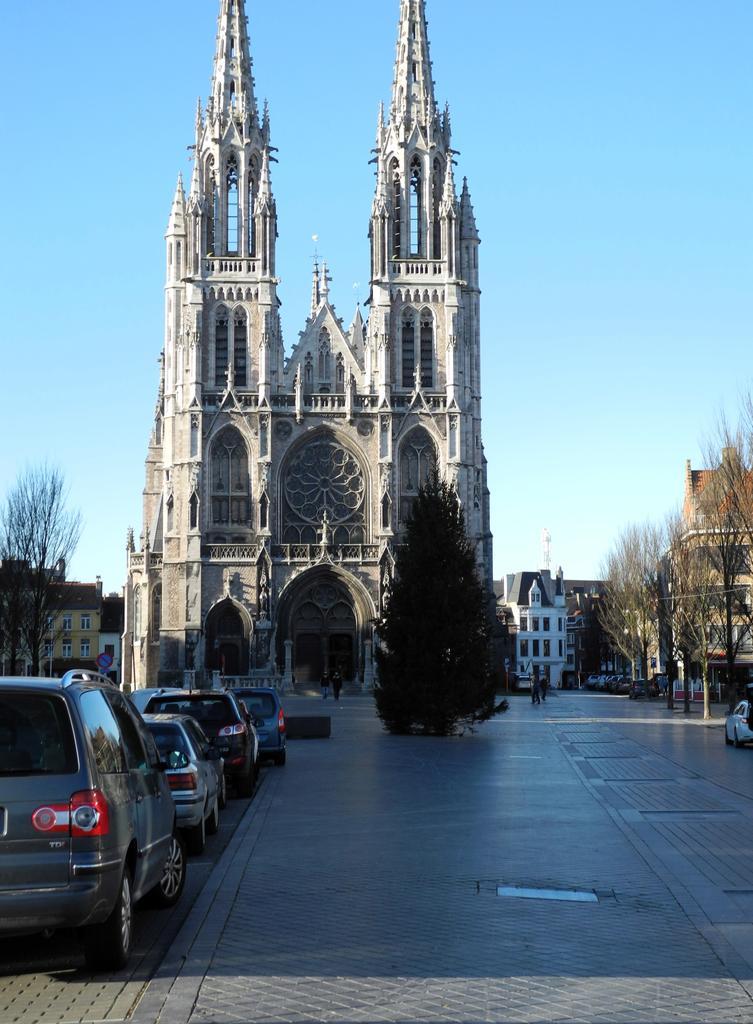
The fish market is always a pleasure.
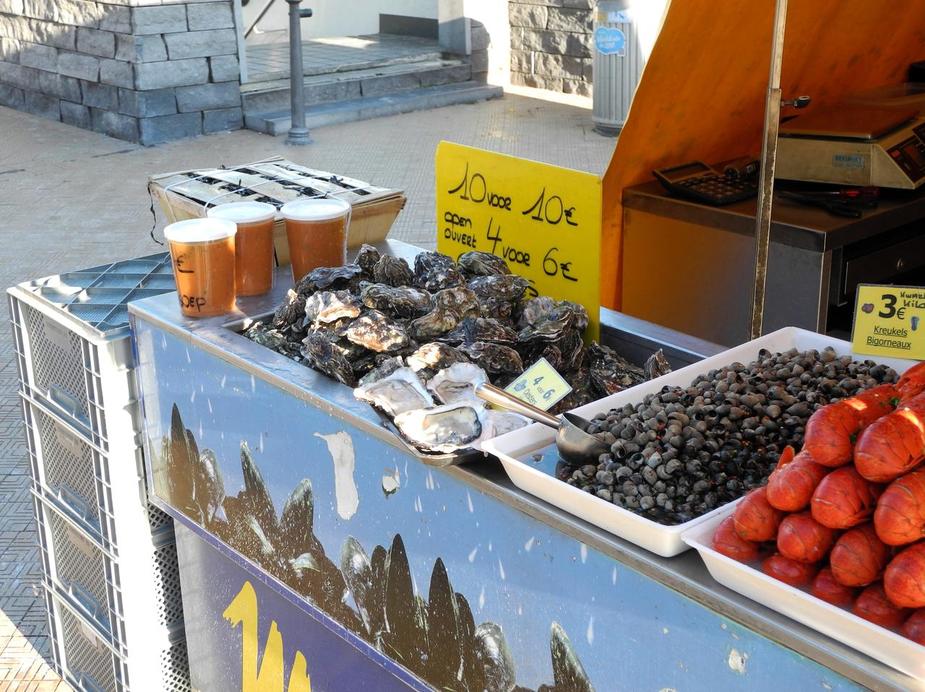
A brief look at the beach.
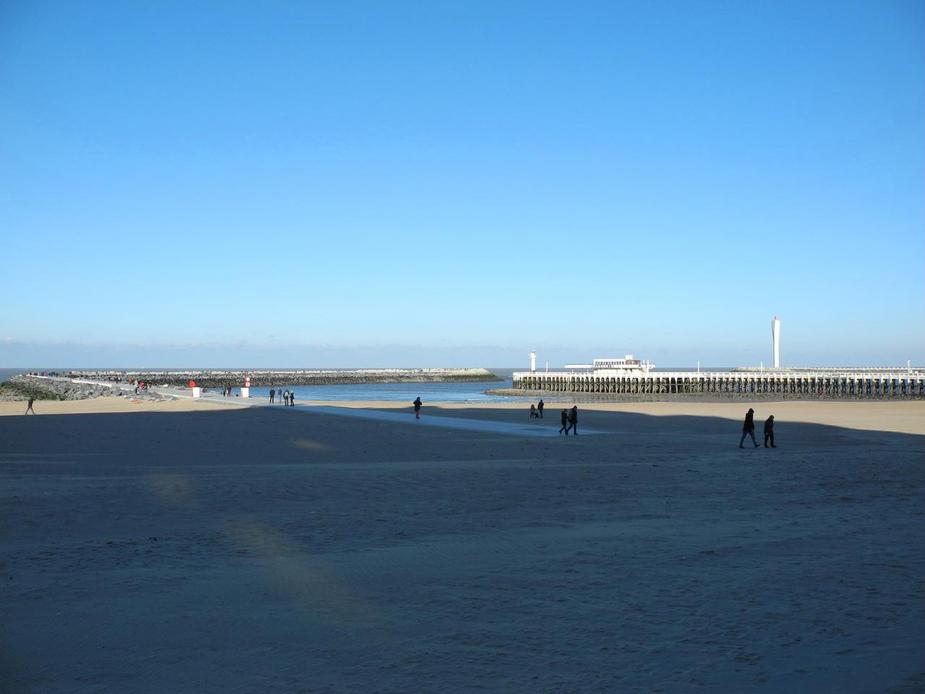
We then had lunch in one the numerous restaurants on Visserskaai. A fresh Sole Meunière. Yam! 
Back at the airport an hour later. Why does the Ostend terminal always remind me of Spain? 

During the security checks, we duly advised the personnel that we were going to the Channel Islands, but the lady didn’t know what that was. They eventually asked us if that was in England and I said “no, it’s the Channel Islands.” Shrugging her shoulders, she said, “well I’ll just call the policemen, then”.
When he came over, he just briefly looked over our IDs and even he did not really seem to know that the Channel Islands were not part of the European customs union. So, with no further questions asked, we paid the fees and headed out to the aircraft (as always, I had already filed the onward flightplan in the morning, at home).
The aircraft was now sunbathed to certain extent and sure enough, the cabin didn’t feel all that cold anymore.
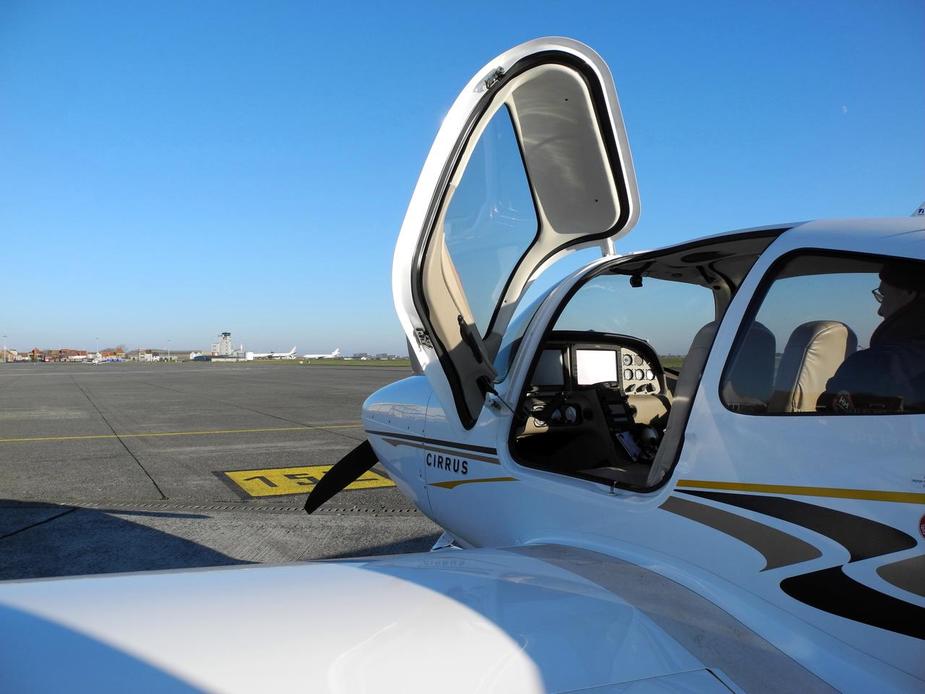
By the way, a flight like this brings about an interesting flightplanning problem, since there is absolutely no southwestbound airway along the French coast. This leads to flightplanning programs proposing routes which cross the Channel twice. Definitely underable during that time of year!
Here is what Rocketoute shells out:
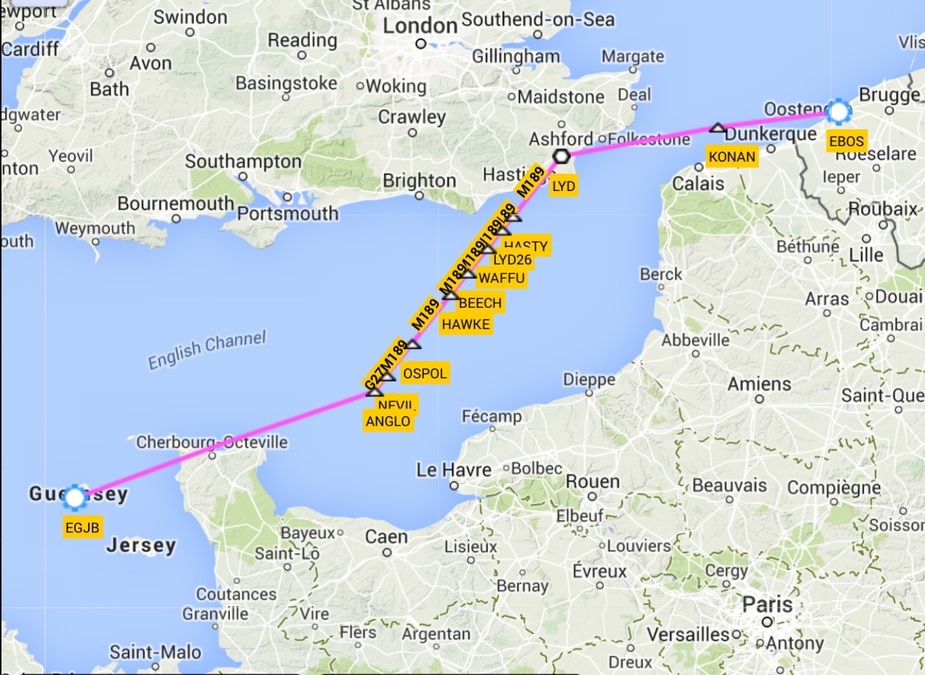
The autorouter proposes something similar. No way to come up with a decent routing along the French coast. When planning this flight at home, I hacked a (long) manual route through France. I figured that if the French at least received the flightplan, they would clear me on a more direct route (whereas, if the above flightplan was filed, Paris would not have any notion of us). But the overhead turned out over 45%(!) and it just felt “wrong” filing such an absurd flightplan. So, in the end, I decided to file the above flightplan nevertheless. What I did though is I manually included the Lille and Paris AFTN addresses on the flightplan and even put a remark into field 18 “after KONAN, request routing via DPE and CAN”. 
No idea if this helped at all. In any case, when requesting startup, I advised Ostend tower and told him the old story about “IFPS restrictions causing me to file a stupid routing… blabla”, requesting instead if he could check with the French if they could clear me via Dieppe and Caen.
Two minutes wait and then, sure enough, we received the requested clearance.
Initially, it was to Koksy VOR (KOK) and then on to Dieppe. Here we are climbing out.
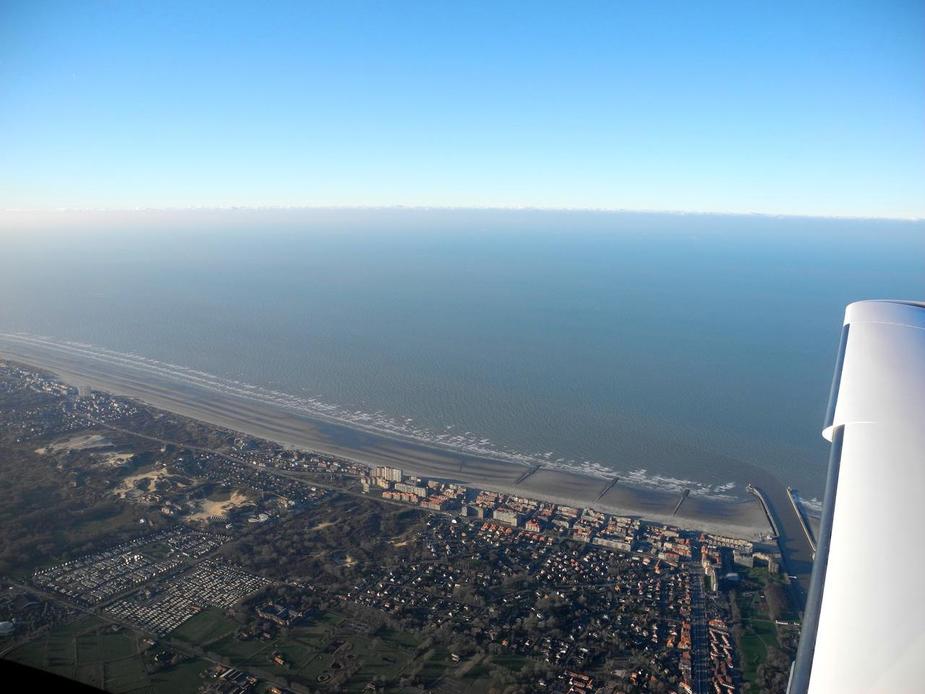
Flying past Le Touquet.
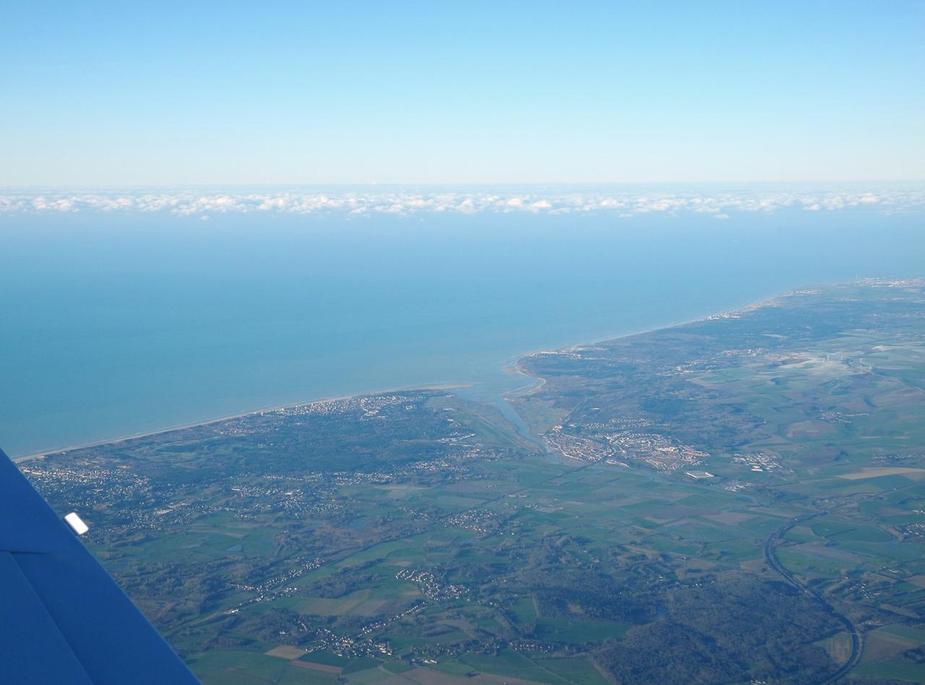
Near Dieppe.
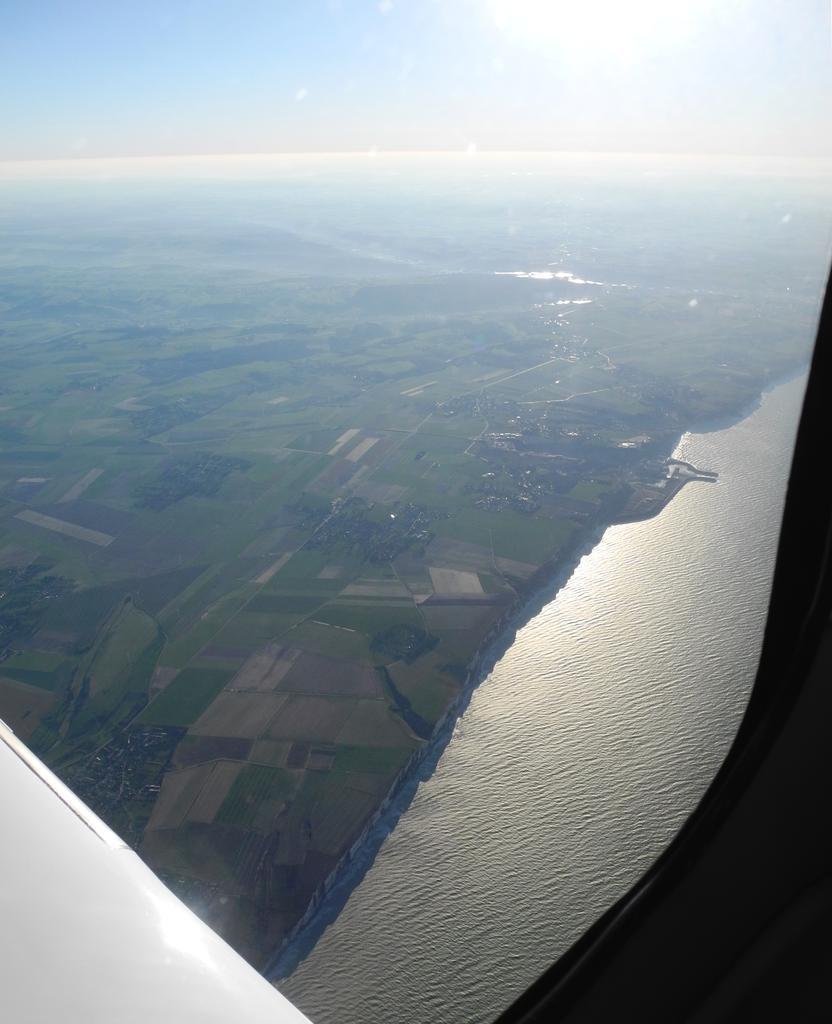
The cliffs of Étretat, near Le Havre.
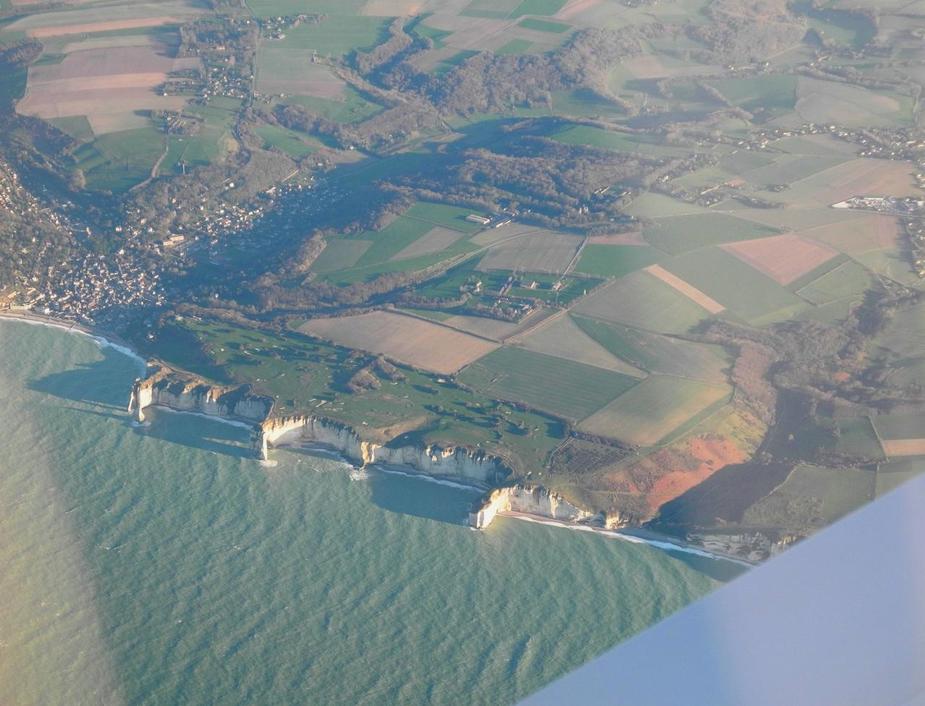
We then flew past Caen and the invasion beaches and were soon cleared to Jersey VOR and, shortly after, to Guernsey.
Abeam Cherbourg.
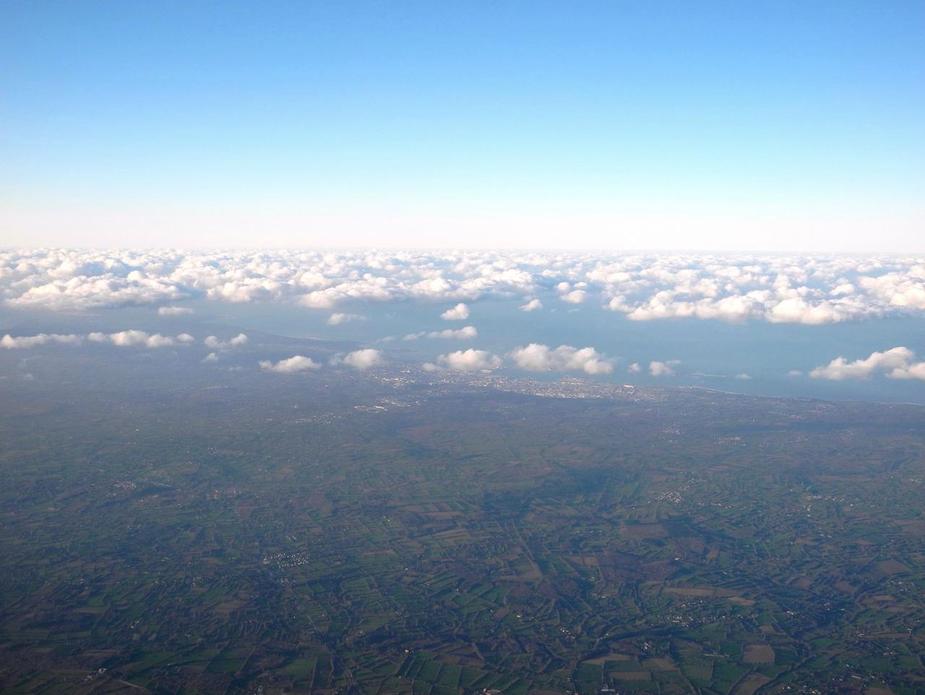
In the descent, a first peak of Sark.
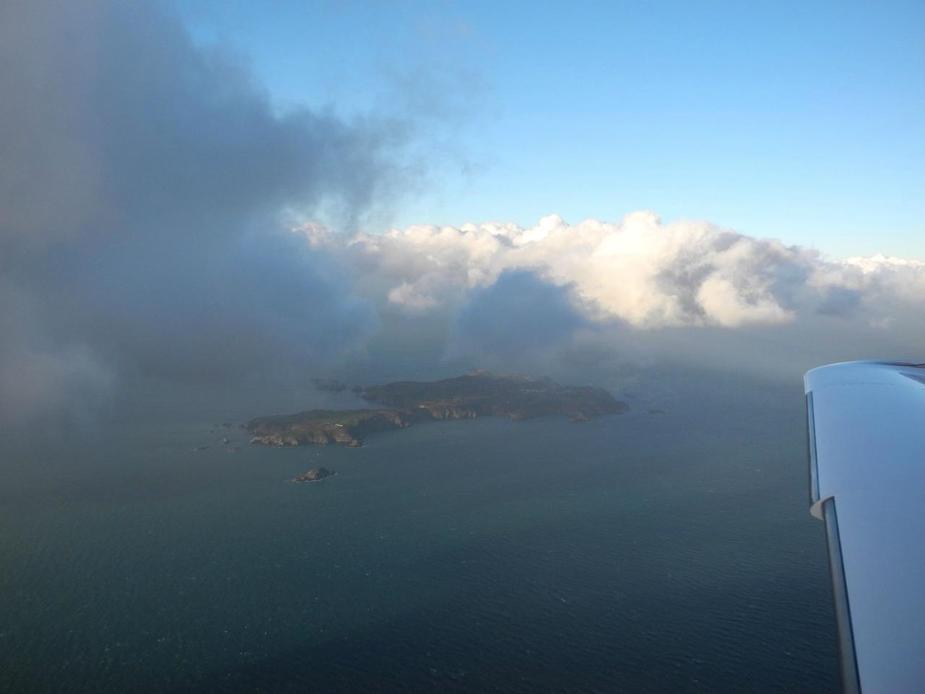
And a few first peaks of Guernsey. A visual approach sure would have done the trick, but this time, we just flew the vectored ILS to runway 09. A few more views from the final approach:

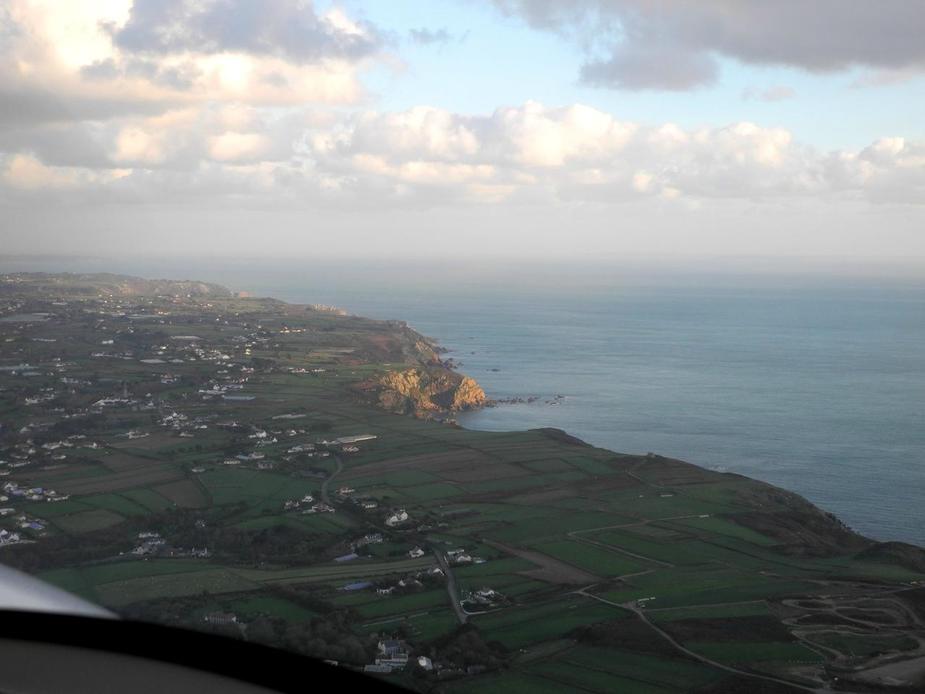

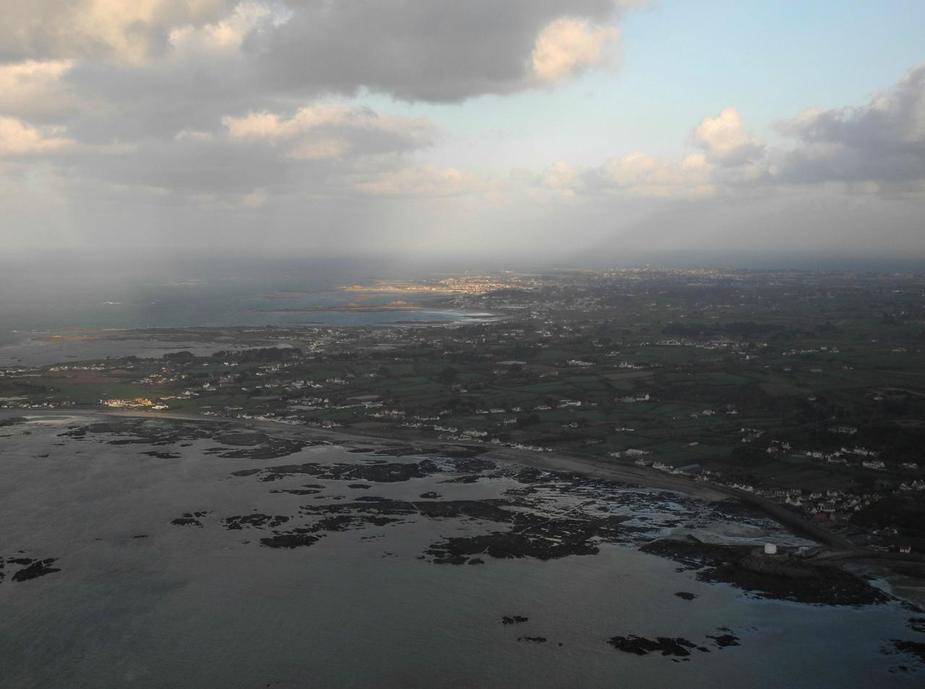
After landing, we taxied to ASG (a local maintenance shop that does the handling for light GA) and received a friendly welcome. We called the fuel truck and filled her up at 1.12£, about 1.45 Euros. 
The next morning, a few impressions of St. Peter Port.
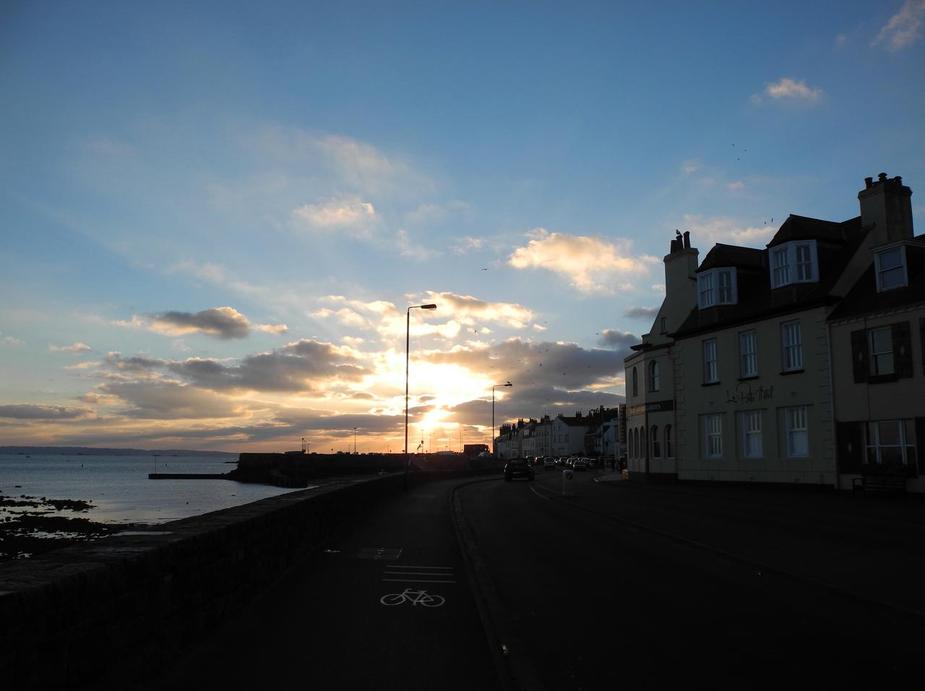
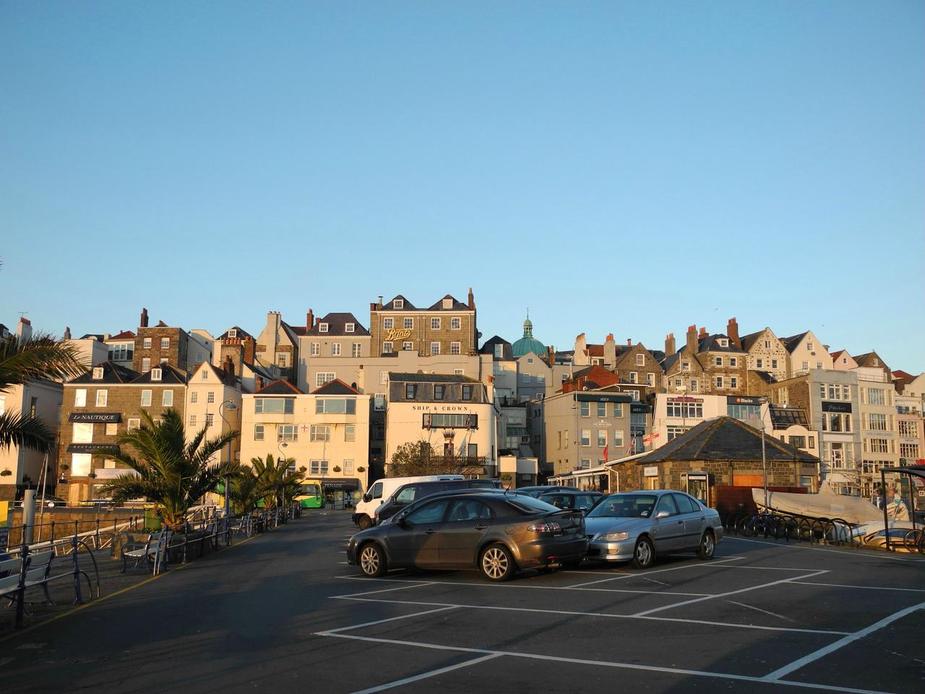
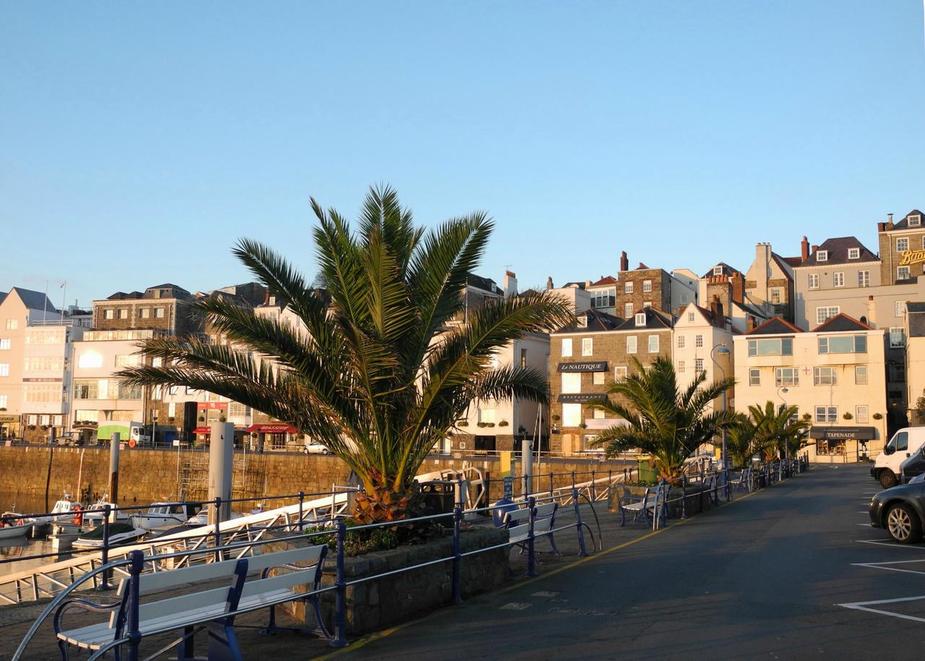

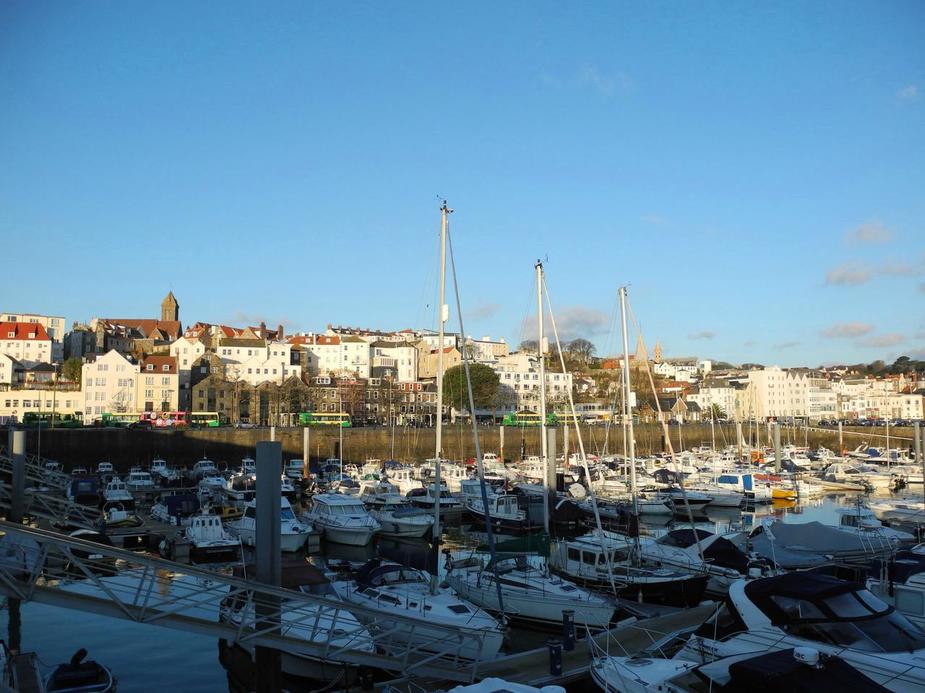
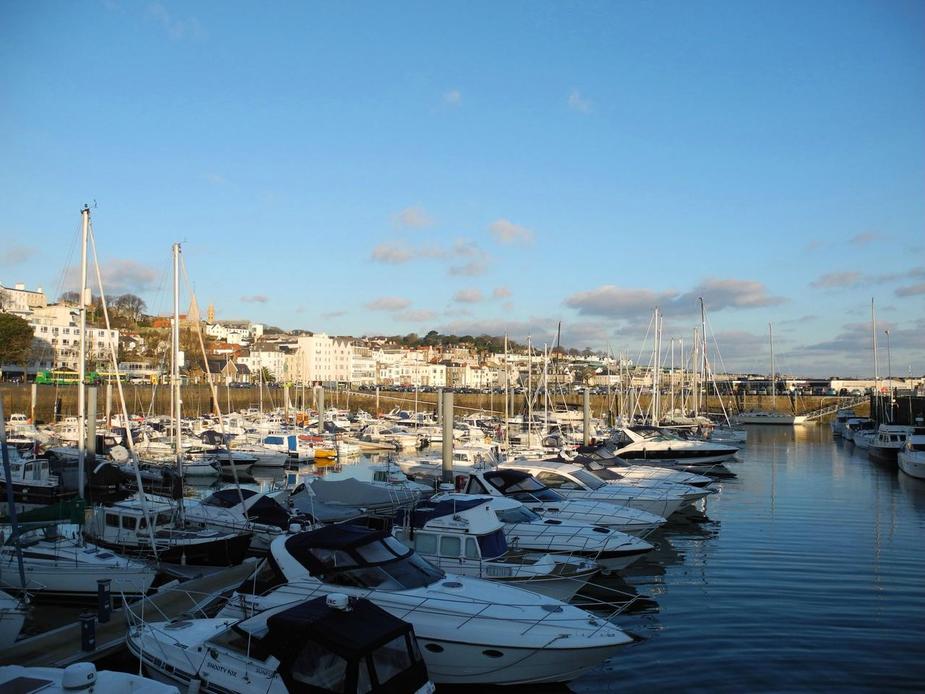
Fermain Bay and it’s beautifully situated Beach Cafè.
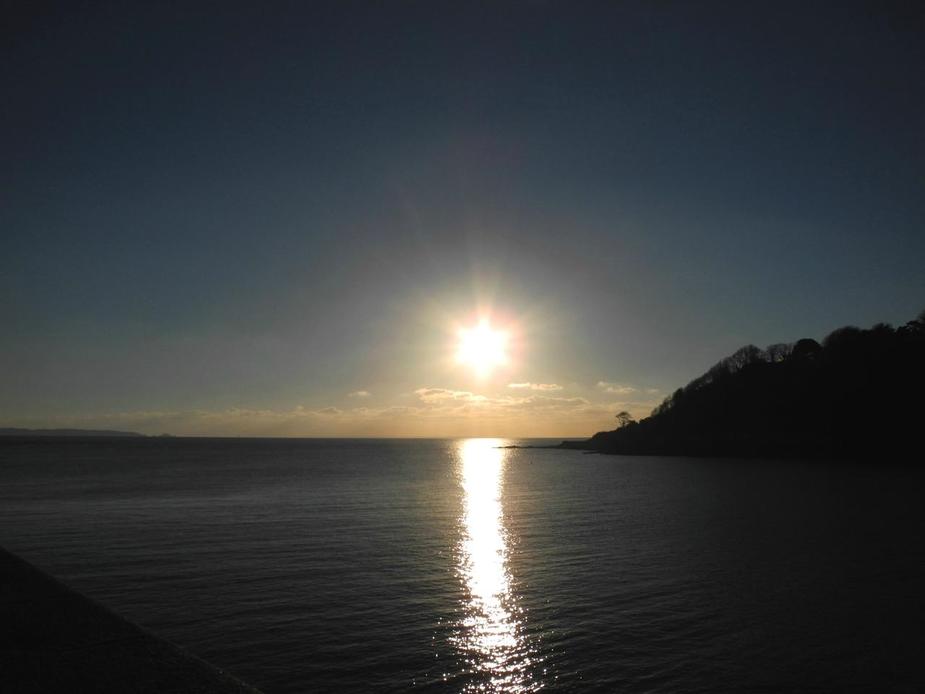
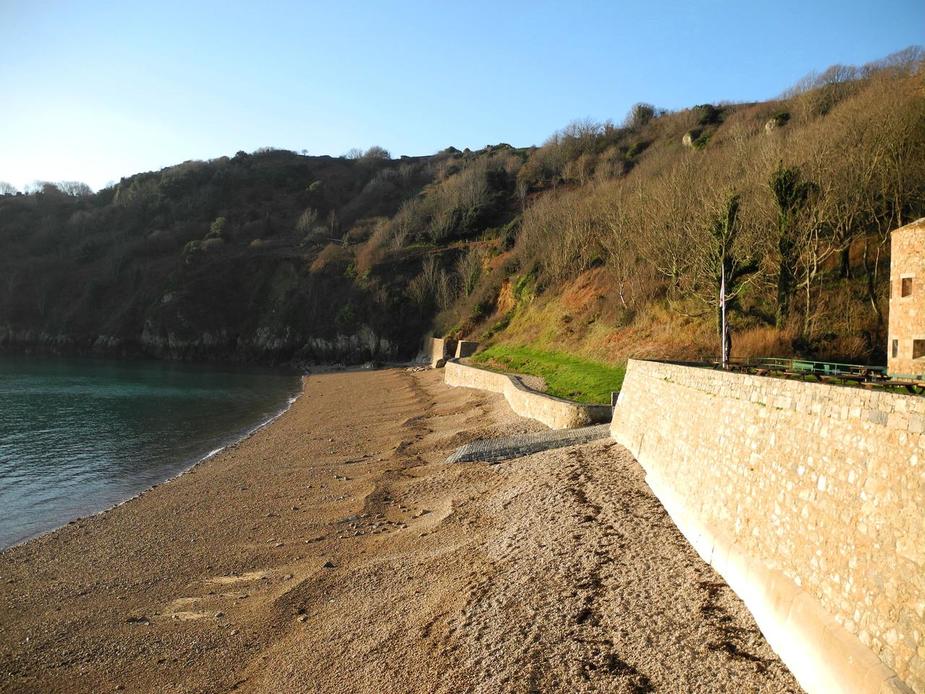
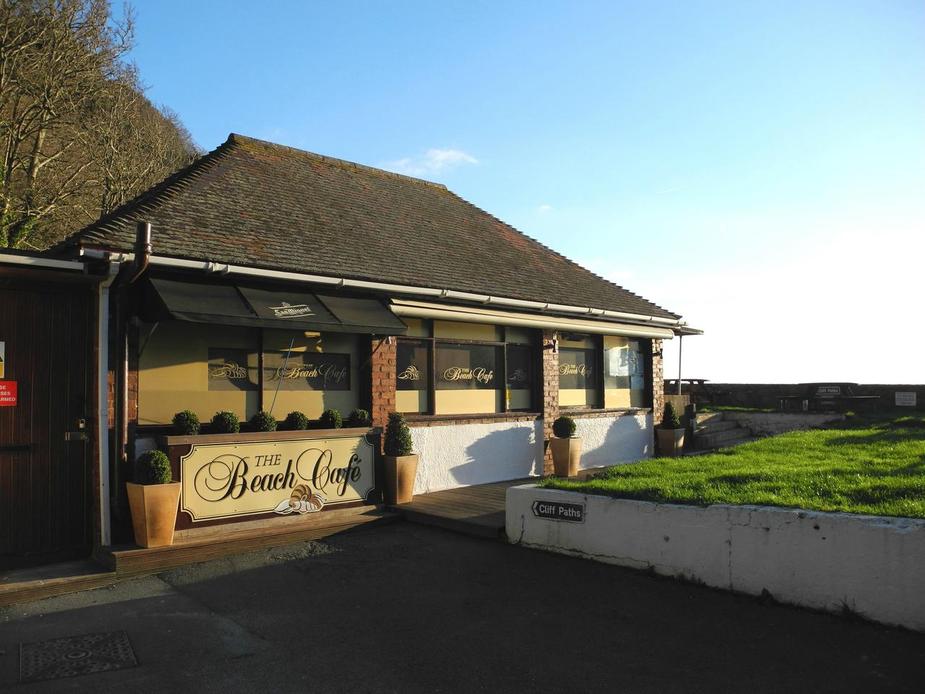
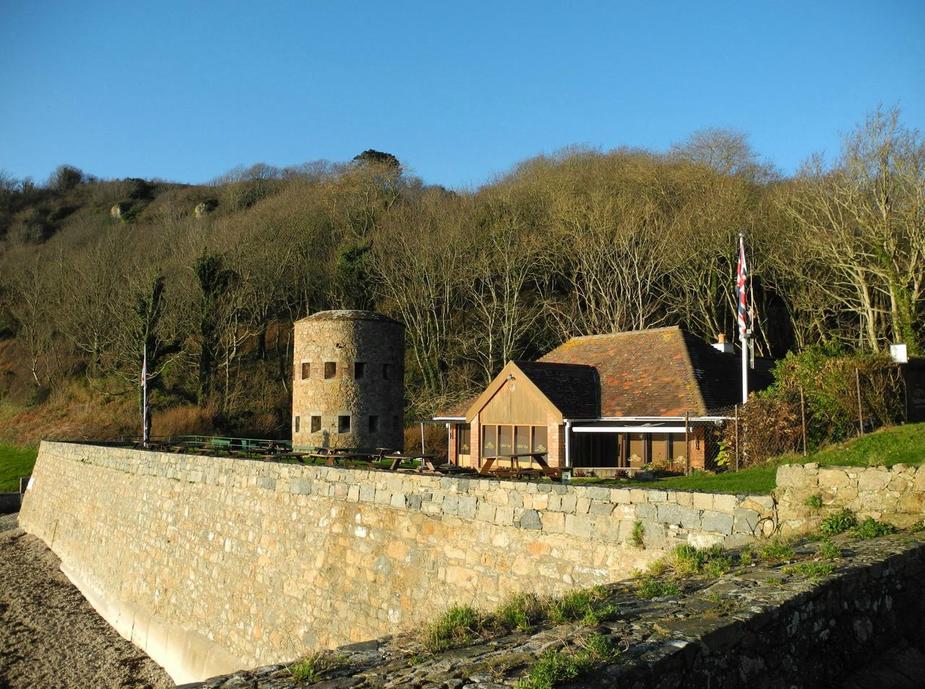
The views from the restaurant “The Auberge”, up at Jerbourg Point.
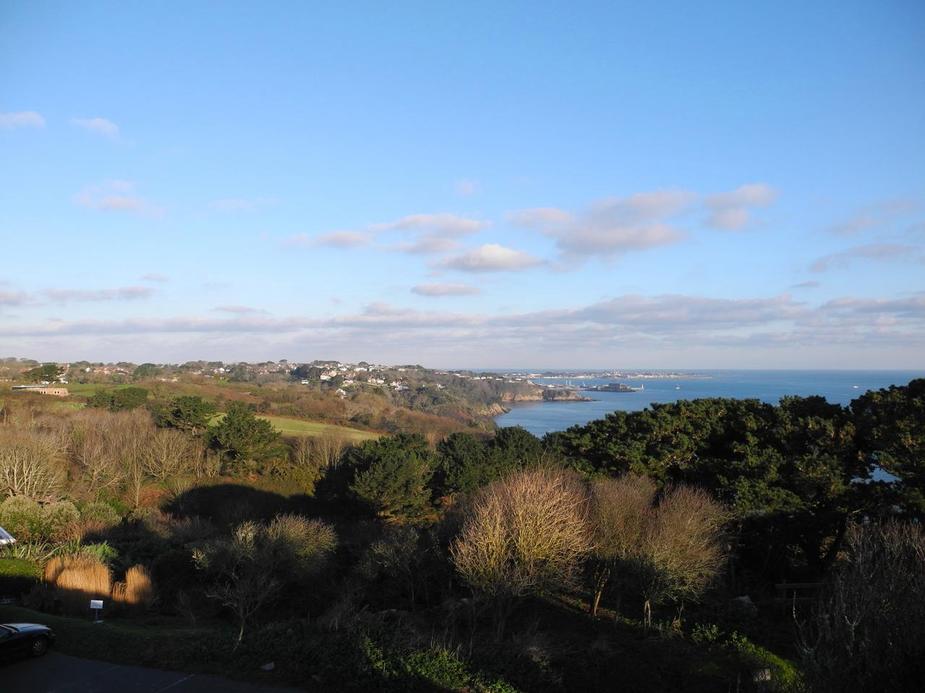
Another small bay somwhere in the southeast of the island. See the rabbit sitting there?
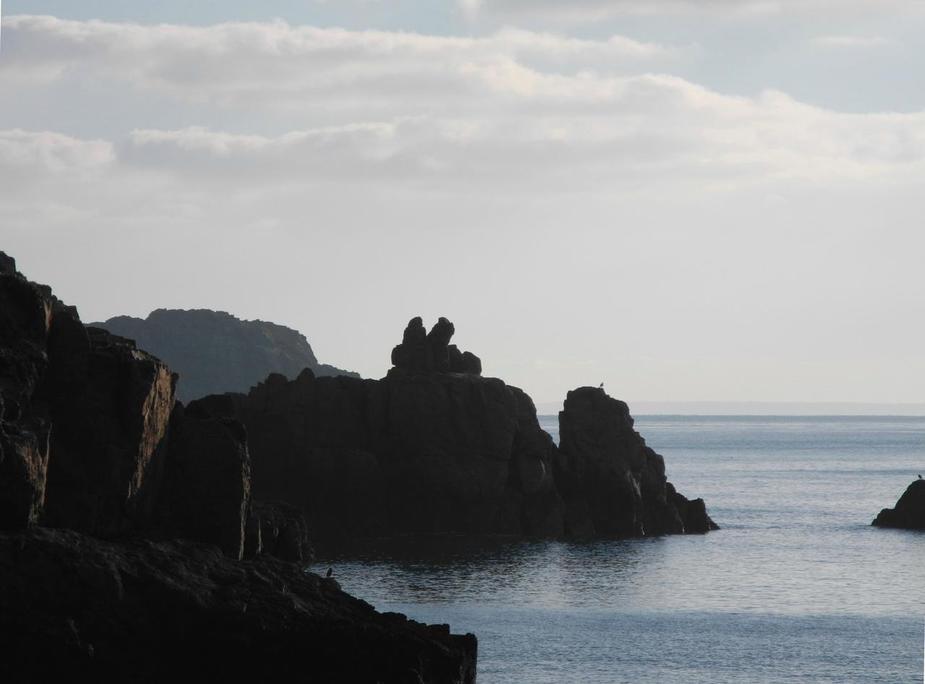
The following photos have been taken on the west side of Guernsey. This is Ilhou Island. Unfortunately, when we arrived, the tide was in and the causeway was flooded.

Generally, the west and north side of Guernsey is full of old fortifications from the Germans.
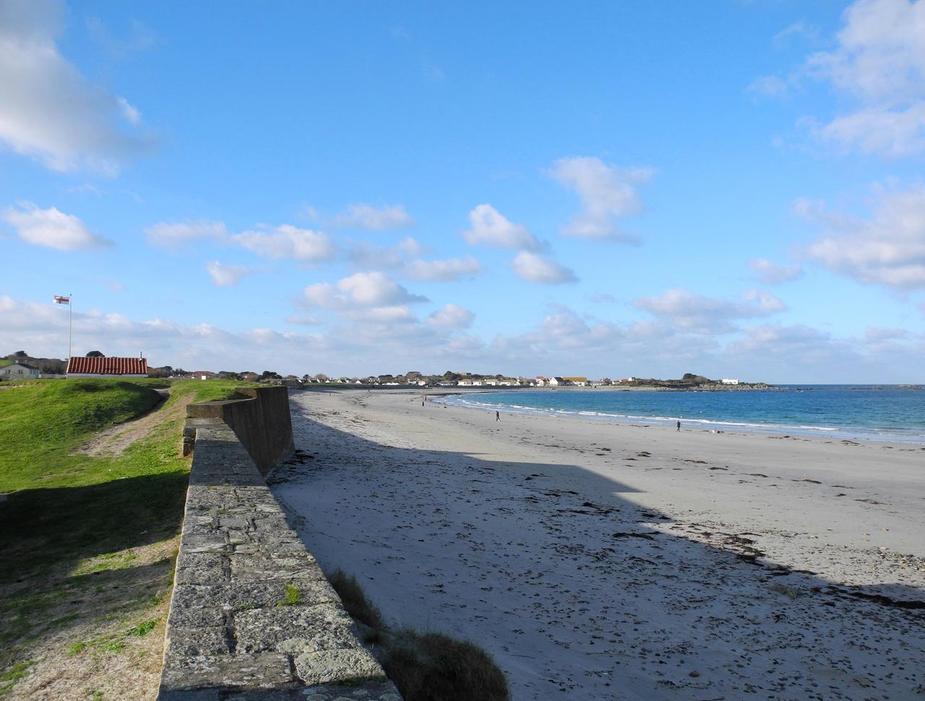
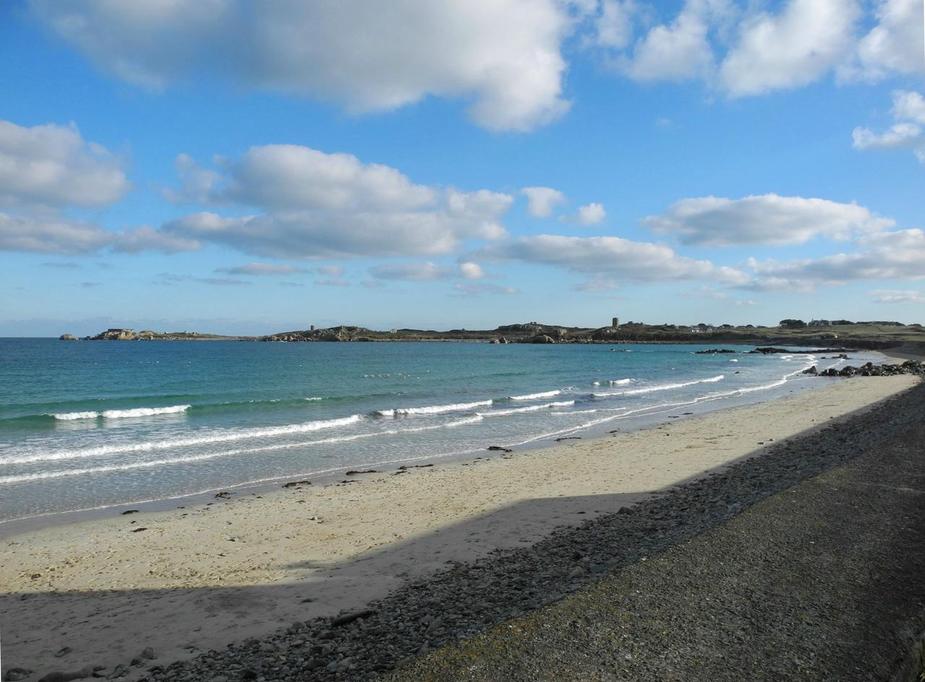
This is Beaucette marina, a natural marina located on the northeast tip of the island.

It was a short but very pleasant stay on this island. Highly recommended. I guess I will be back sometime when it is warmer.
The next morning, it was time to leave again. This time, we intended to fly non-stop.
Here’s the filed routing. Estimated ETE: three hours and fourty minutes.

And here is the wind forecast. At FL100, the wind was mostly from the north at 20-30 knots, but at FL50, it looked like it would be slightly more from the northwest, and slightly weaker. We therefore chose FL70 as the “best compromise” for our flight.
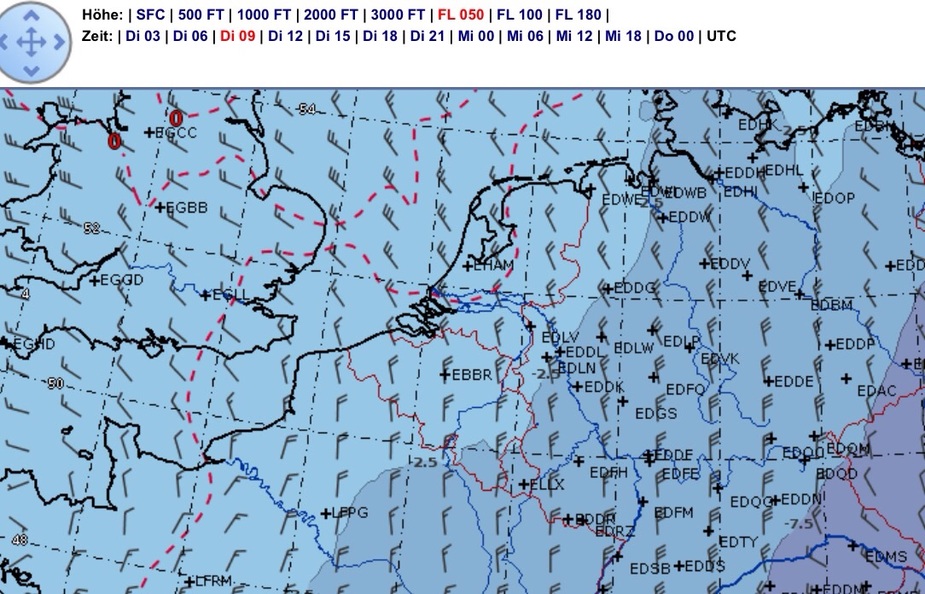
The high pressure was still there over the Channel Islands (in fact, the QNH was 1042!). Snow was falling in the south and east of Germany, whereas the north was mostly dry and also slowly becoming warmer.
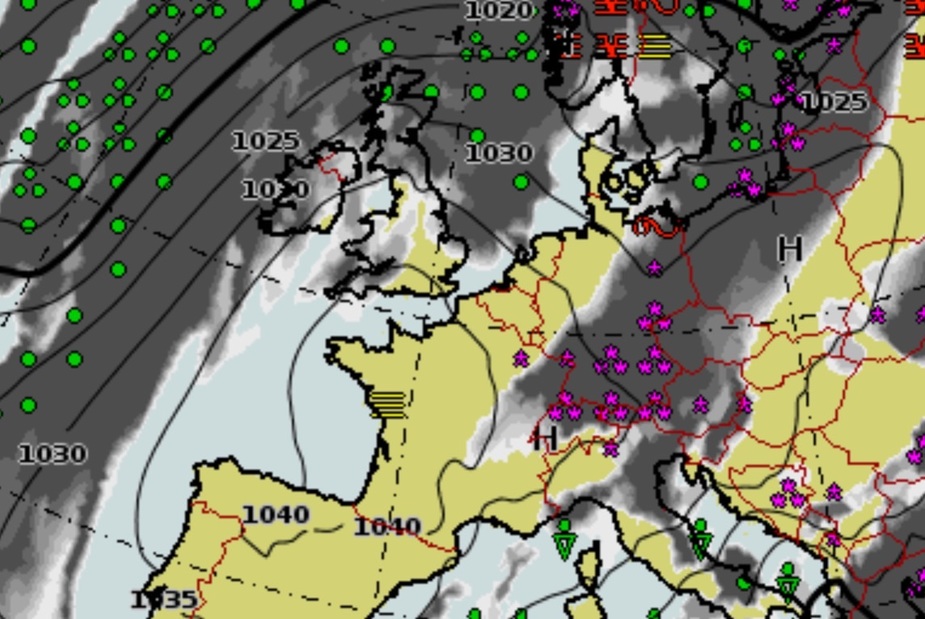
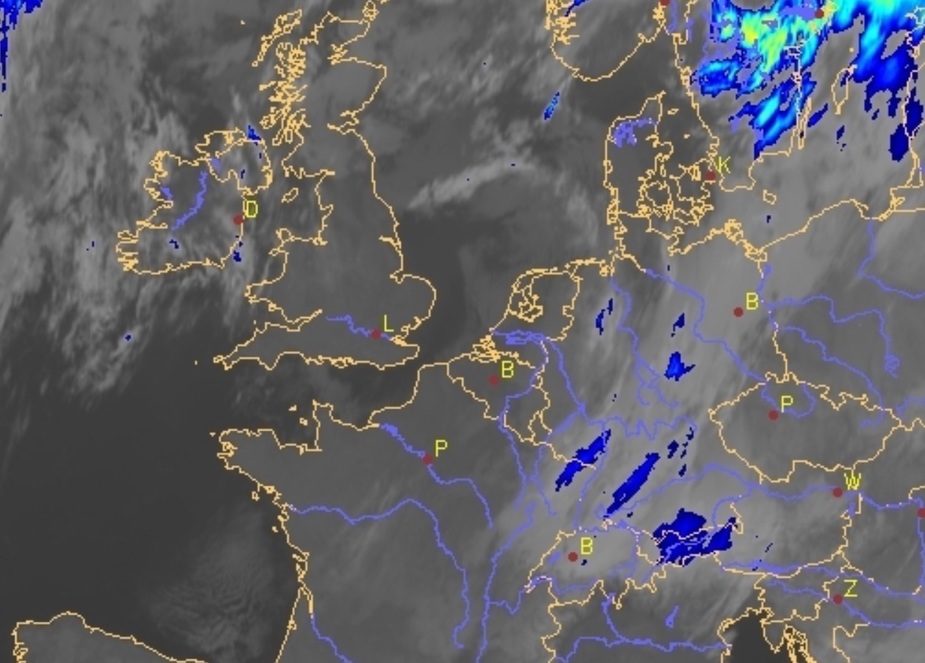
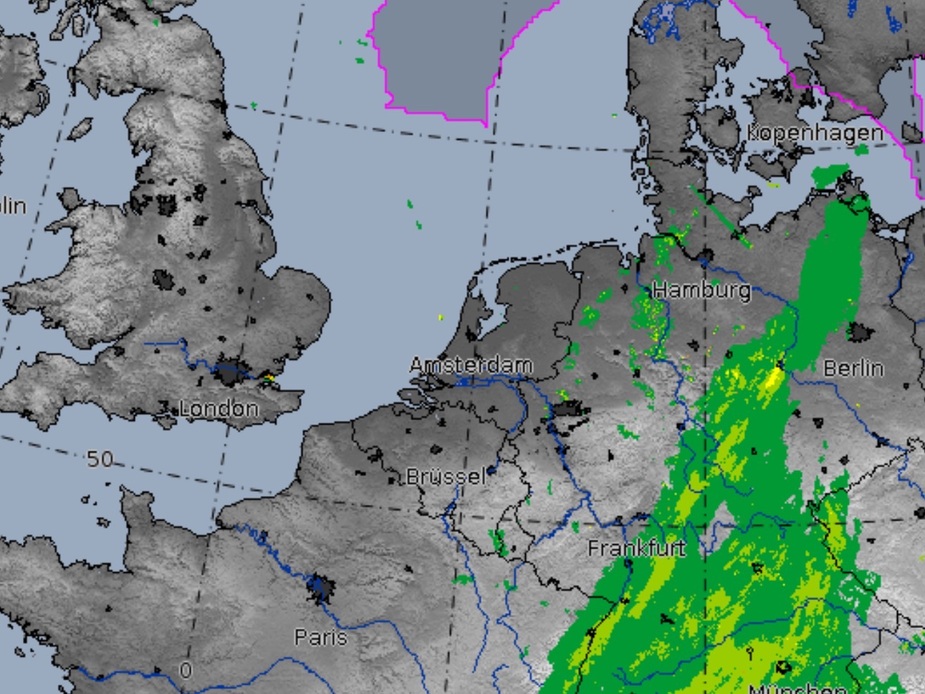
The Gramet looked good, with just a thin stratus layer somwhere between 2000 and 5000 feet for the second part of the flight.
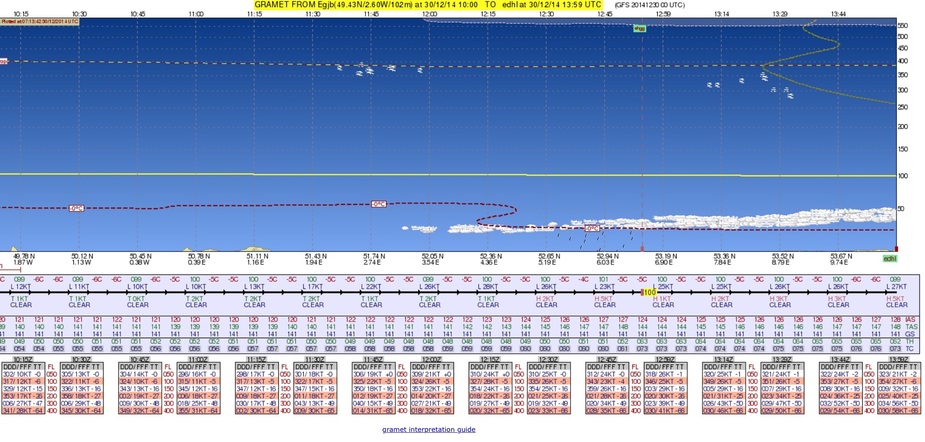
We paid our fees with ASG and headed out to the aircraft, through their hangar. ASG apparently is a Commander specialist. However, they are also a Cirrus service centre.

All the famous regs were there: 
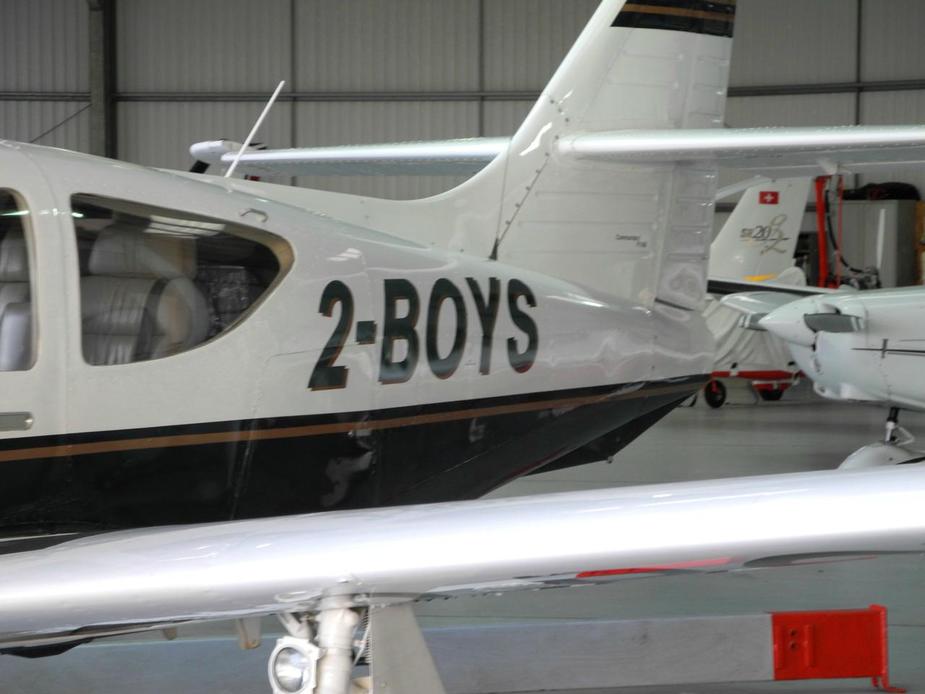
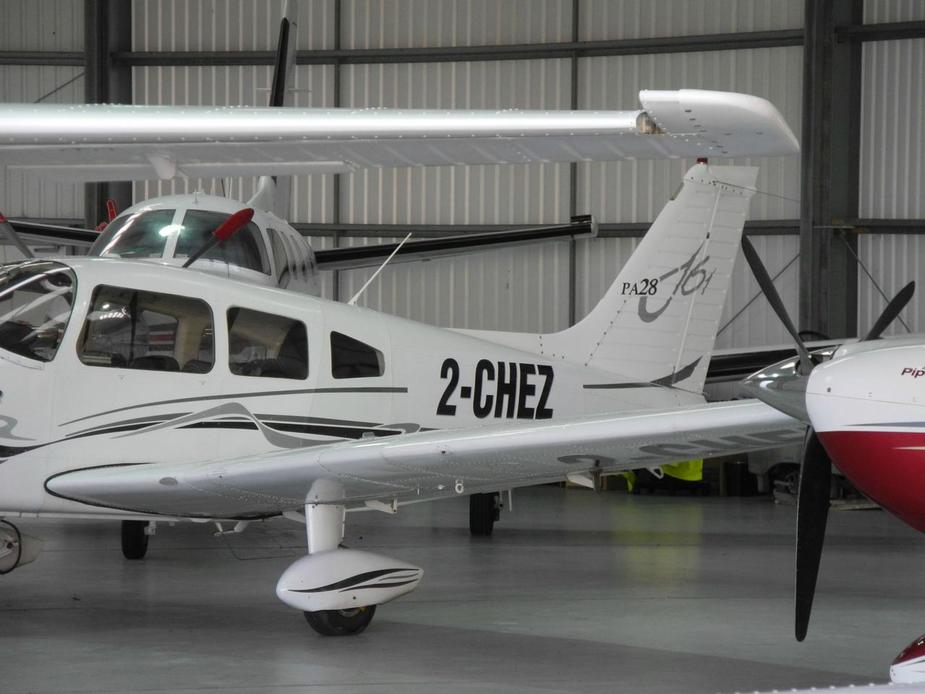
and, of course:

At the hold for runway 27, warming up the engine.
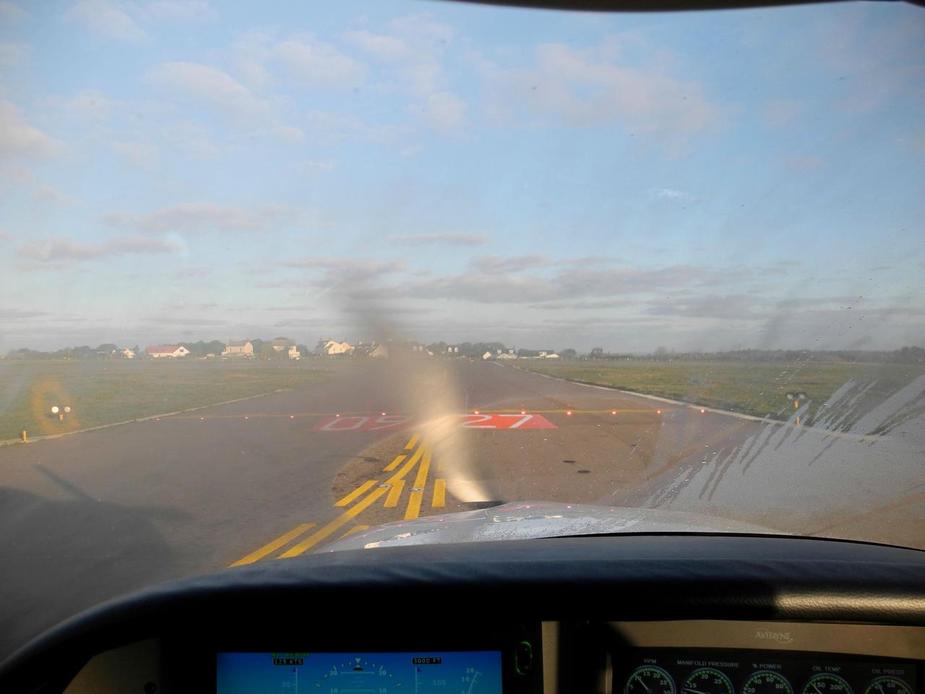
An ATR72 landing. the ATR is, along with the Trilander, the most common aircraft at Guernsey airport.

By the way, the eastbound SID is the CAN SID.
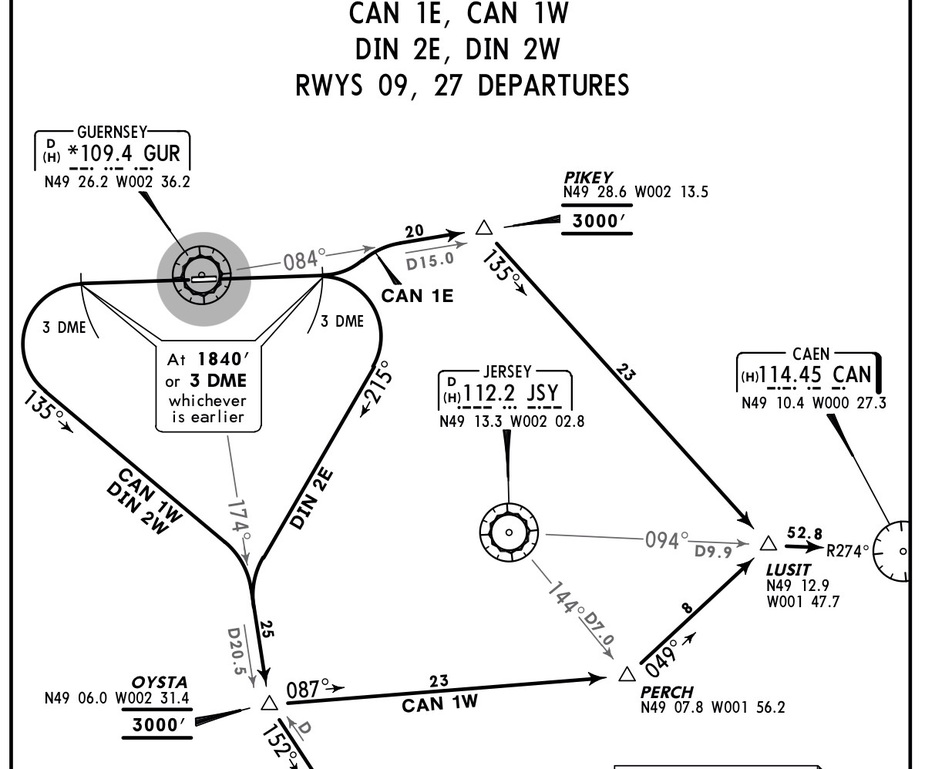
As you can see, it first goes west and then then south quite a bit. Not exactly my idea of a nice quick eastbound departure, especially when a long flight into a slight headwind is anticipated. So, before calling ready for departure, I asked the tower if we could somehow have an early turn to CAN. After a minute, he came back and said “when airborne, turn left to CAN”. I really didn’t expect such a soon turn to CAN, but certainly didn’t complain, also because this would allow us make a welcome sightseeing trip around the south side of the island. I just ask myself: shouldn’t he correctly have mentioned that this was now a clearance for a visual departure? Well, I guess that controllers just don’t care much in these situations as they know the pilot will not crash it into some obstacle when the weather is good are there are no obstacles anywhere…

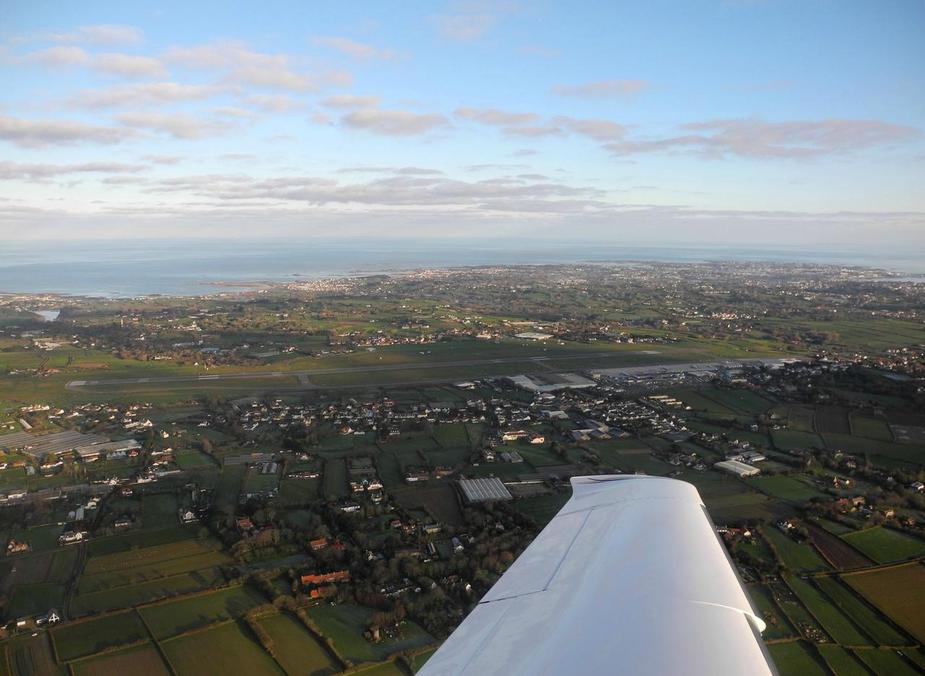
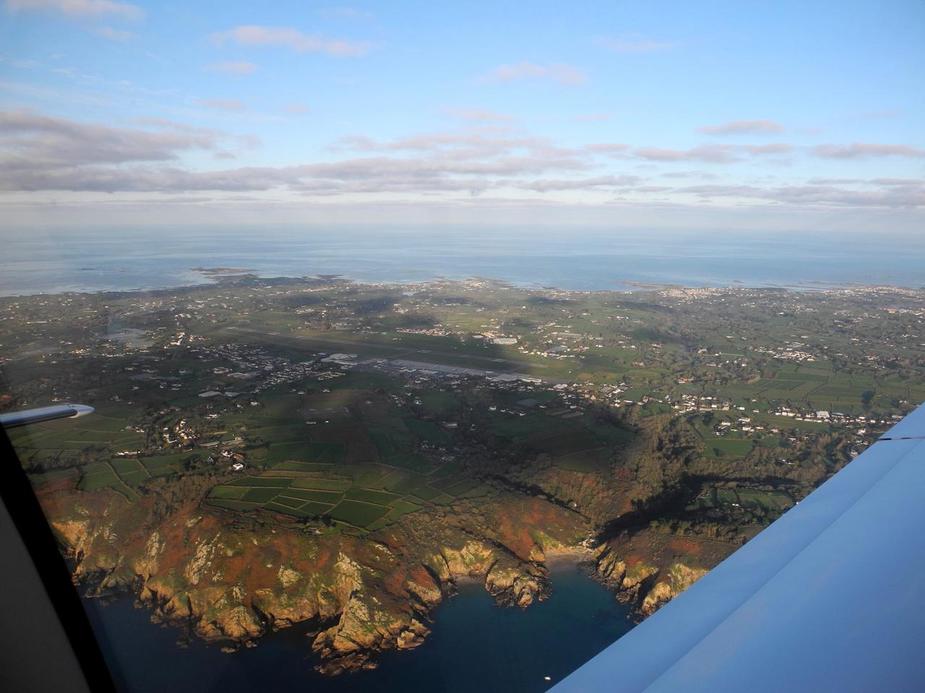
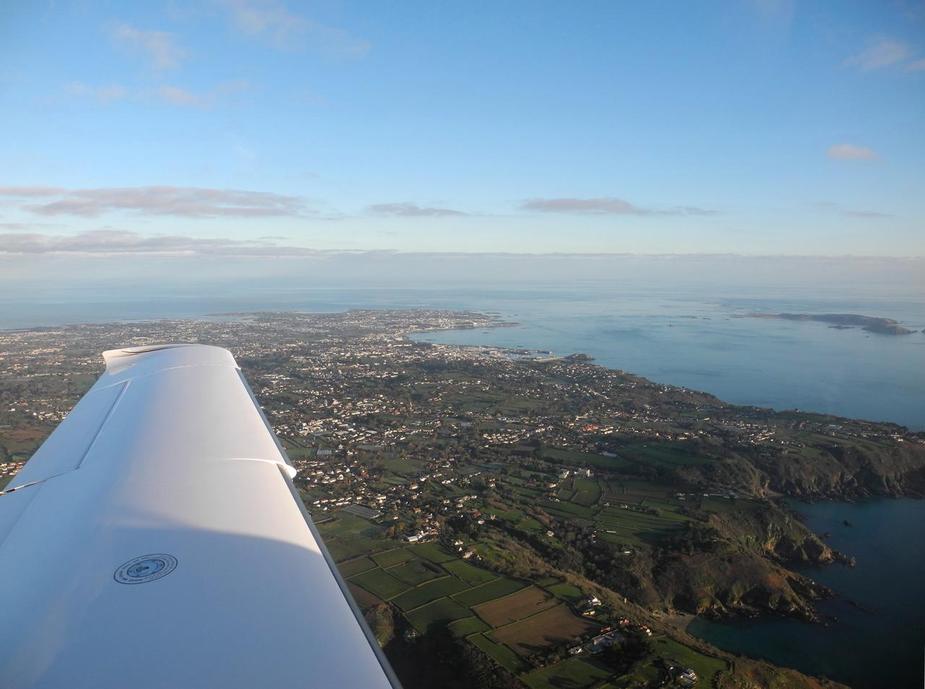
This is Jerbourg point, with the mentioned restaurant on top.
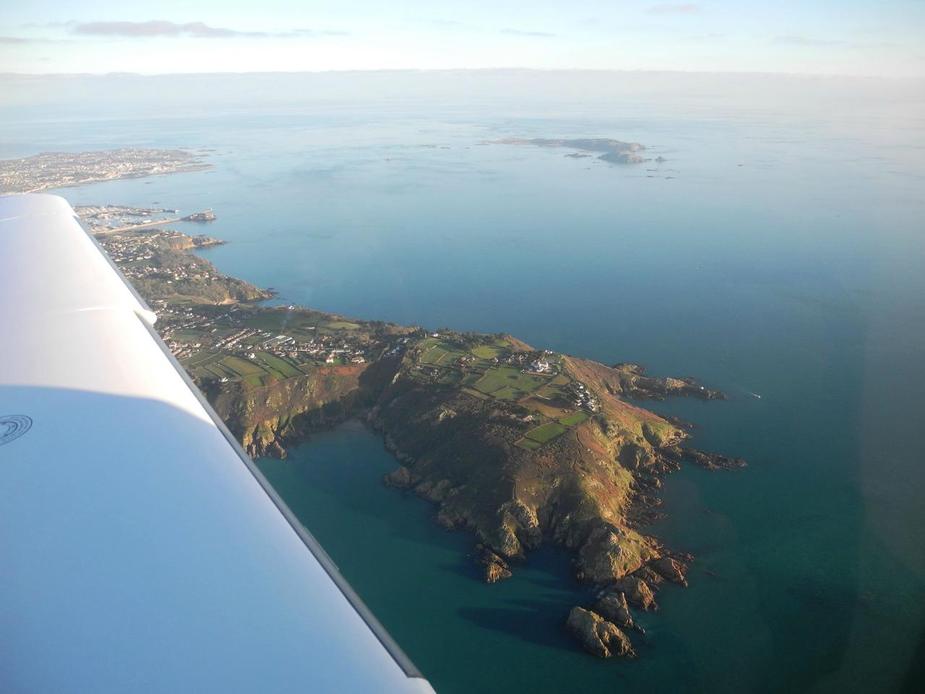
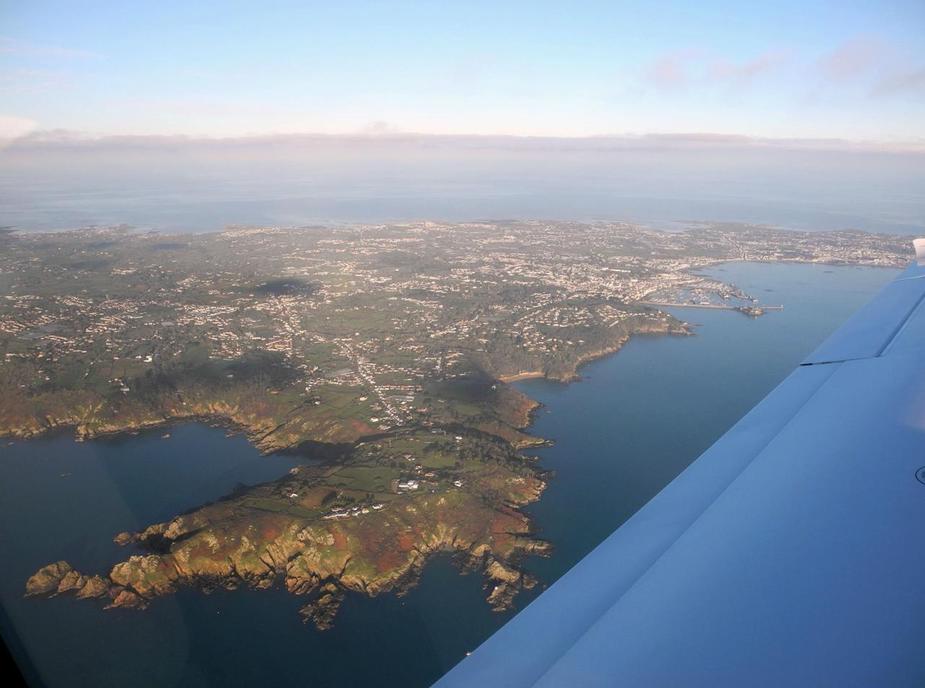
The mentioned Fermain Bay.
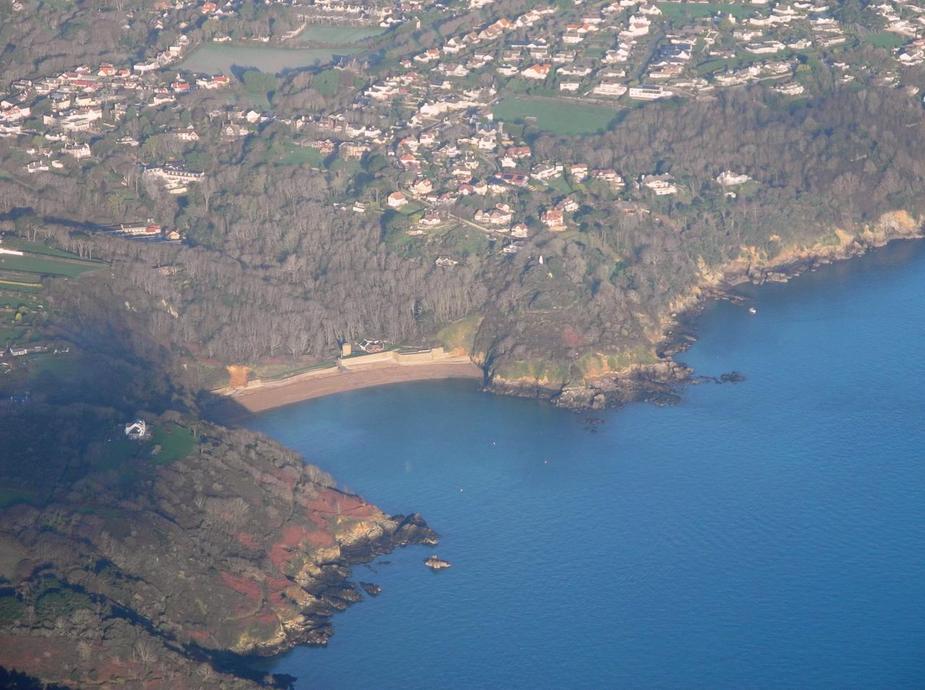
St. Peter Port.
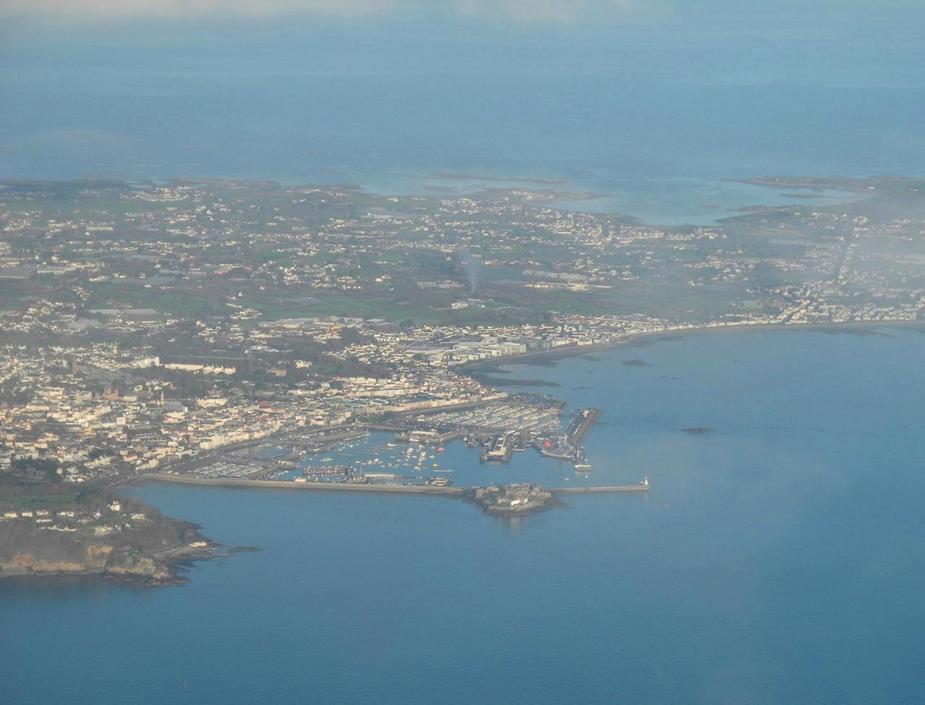
This is Herm.
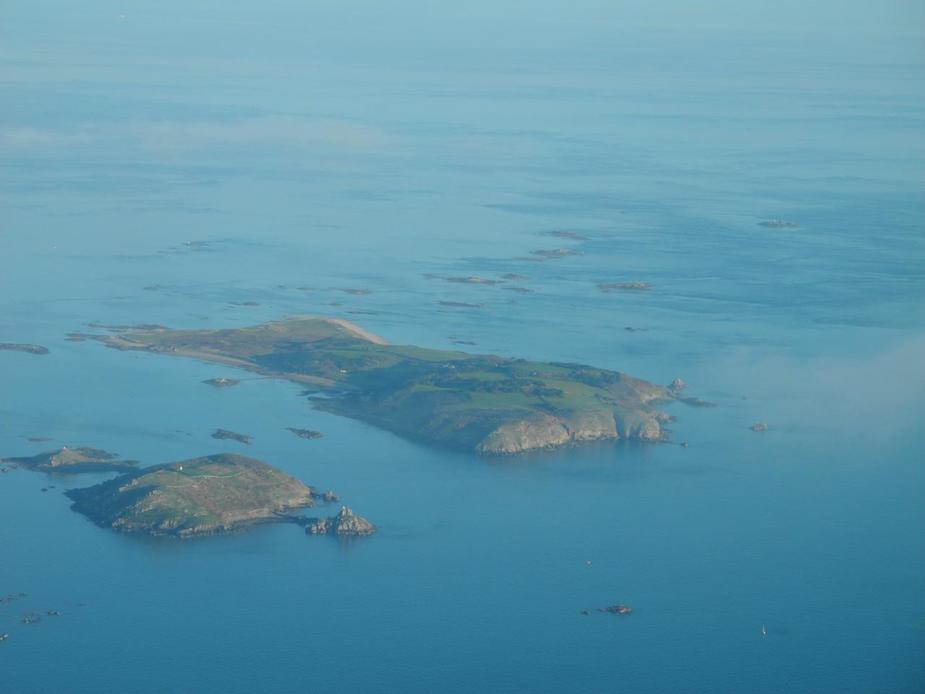
Sark.
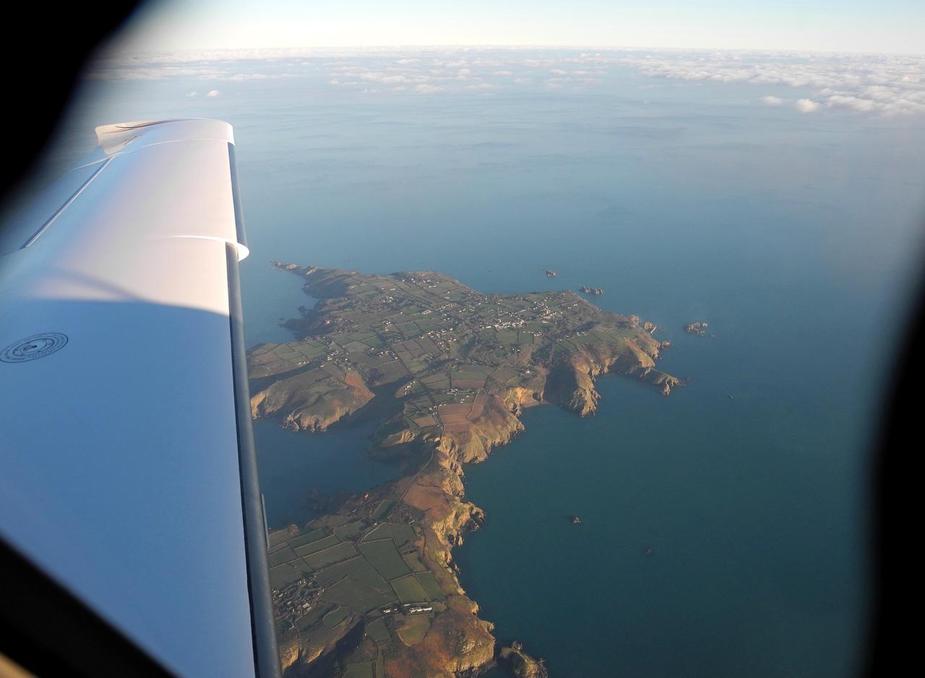
We received an early direct to Dieppe VOR. This kept is just within gliding distance of land.

Shortly after, we even got a direct to HELEN. All in all, I have to say that flying as low as FL70 didn’t seem to be any problem in getting shortcuts. Nevertheless, I don’t rarely fly that low on long flights. We were out of gliding distance for just a couple of minutes, which was acceptable.
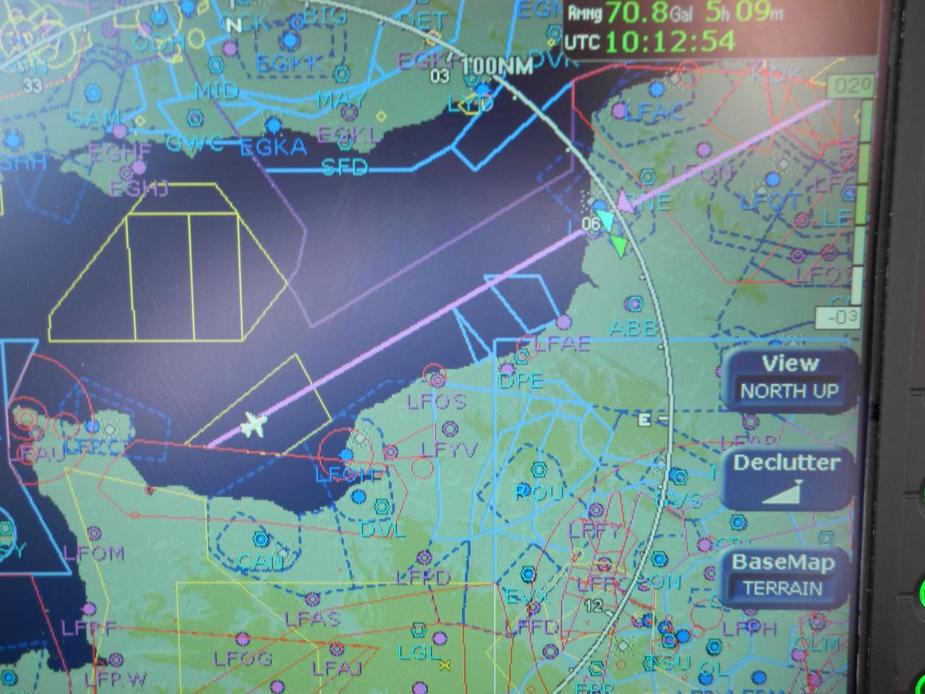
Soon back within gliding distance.
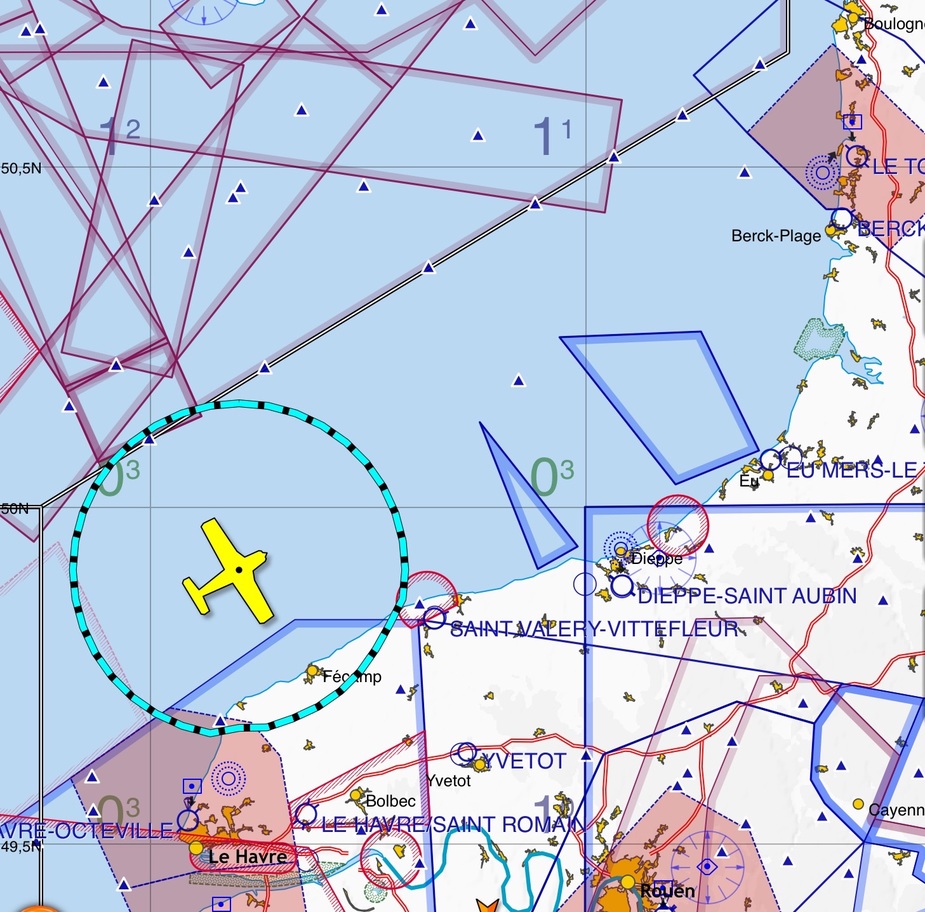
Coasting back in, near Abbeville.

Berck-sur-Mer and its airfield.
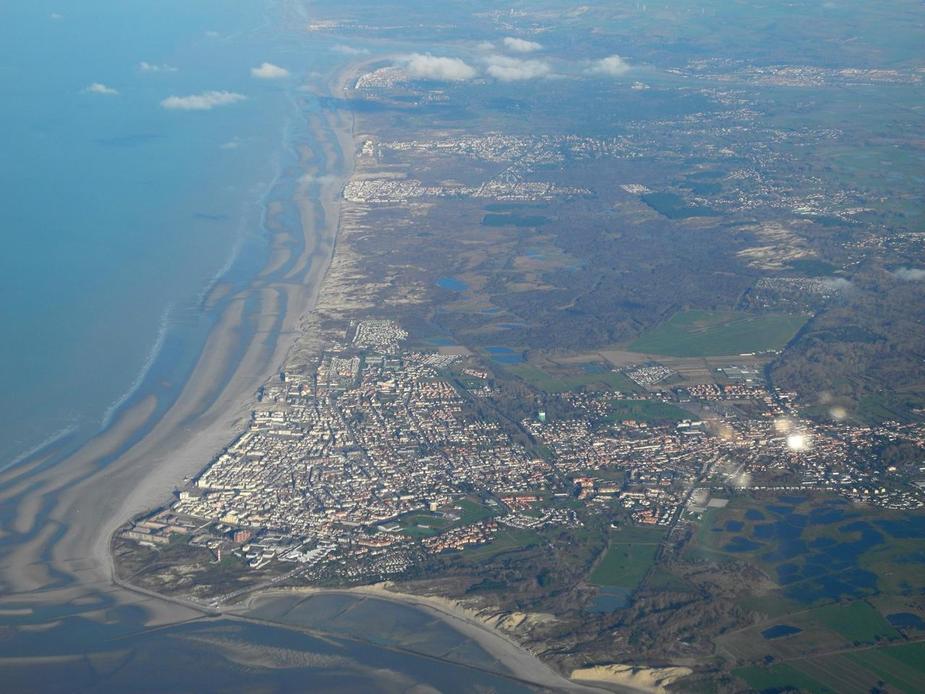
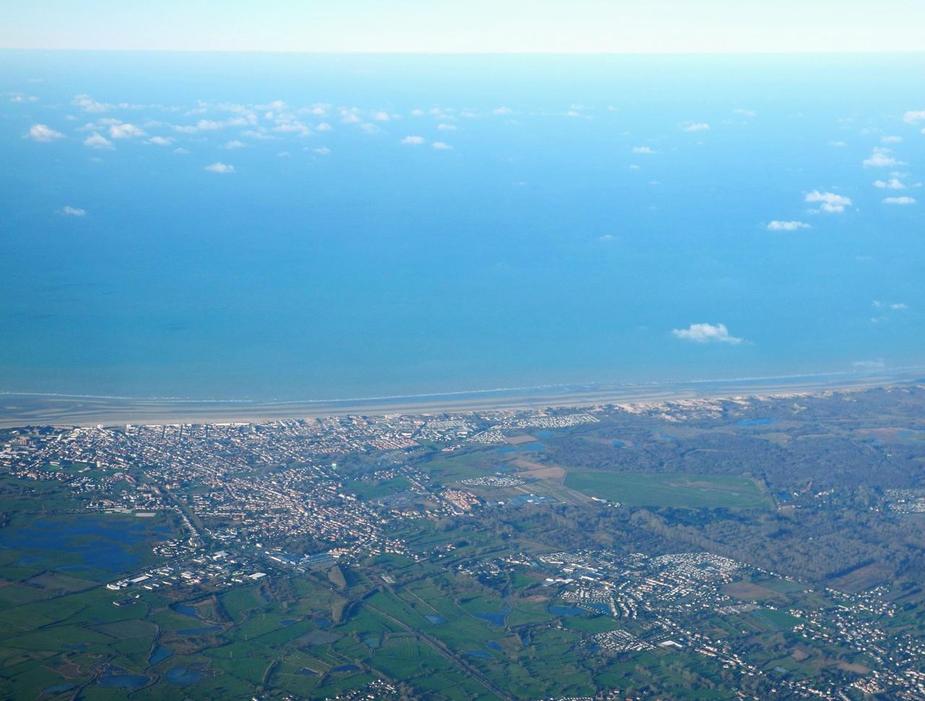
Contrails above.
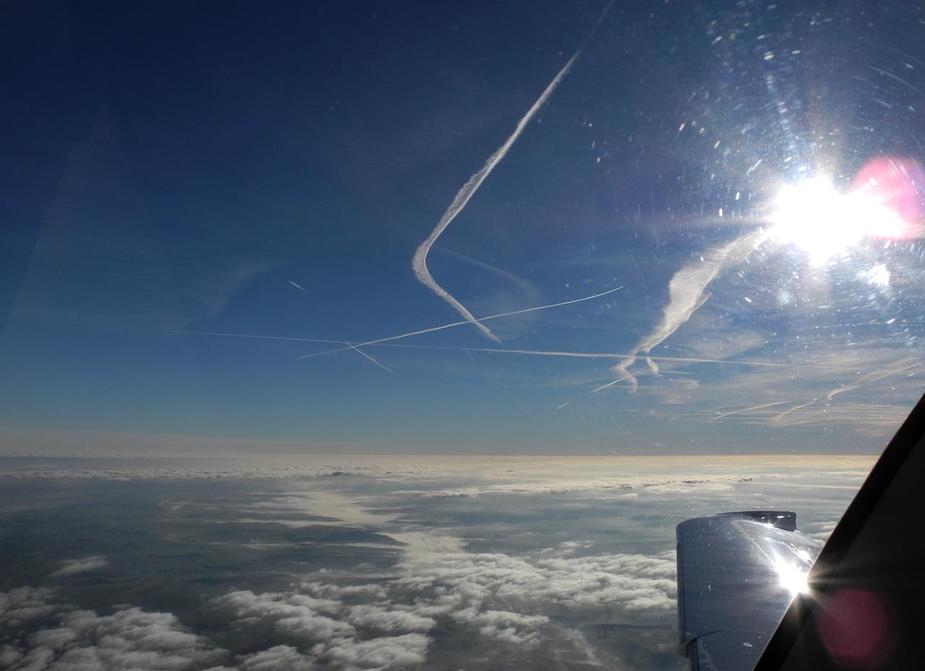
Some fog below. Our wind strategy had worked out well. On average, we only had about 5-10 knots of headwind on this flight back.
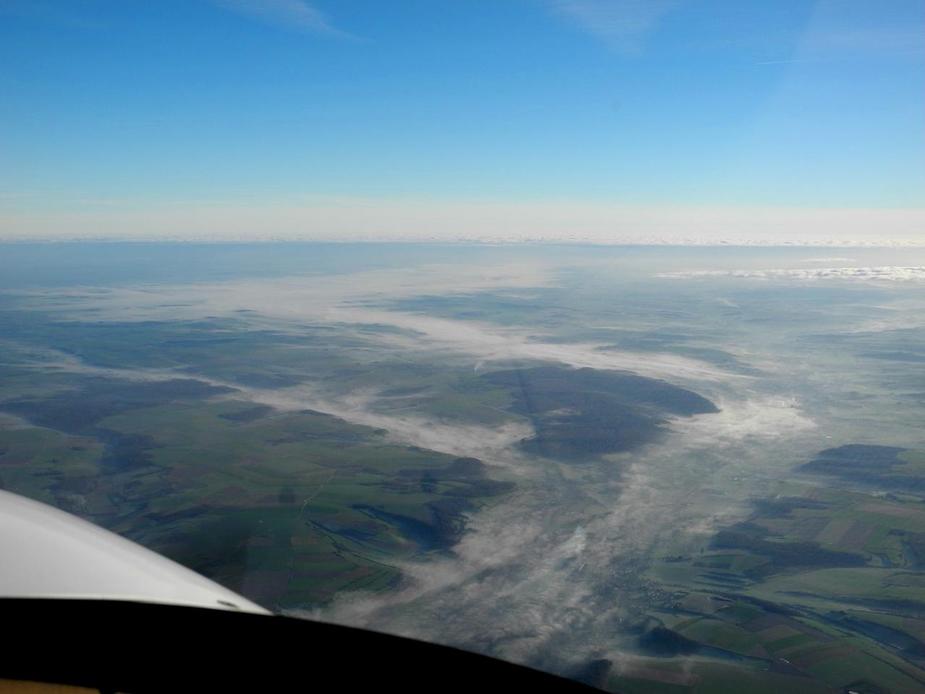
Bruges. 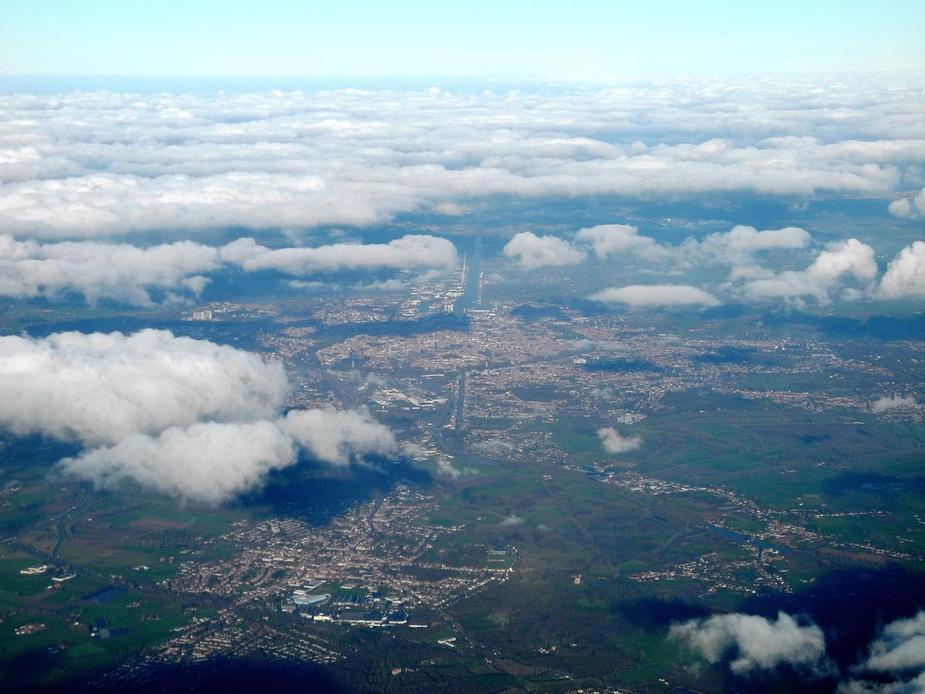
Back in the Netherlands, back with the snow. 
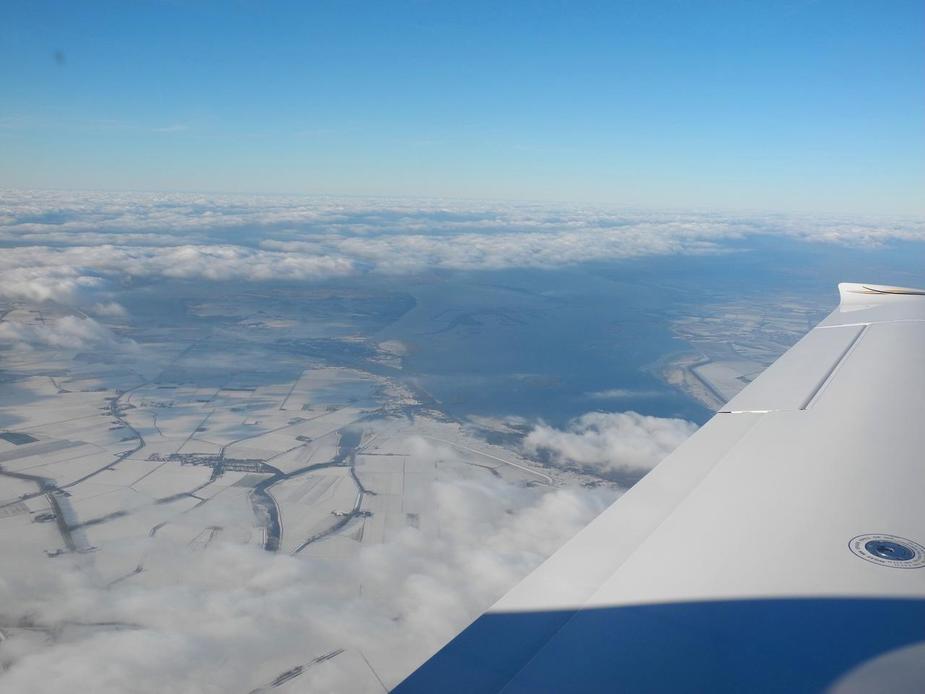
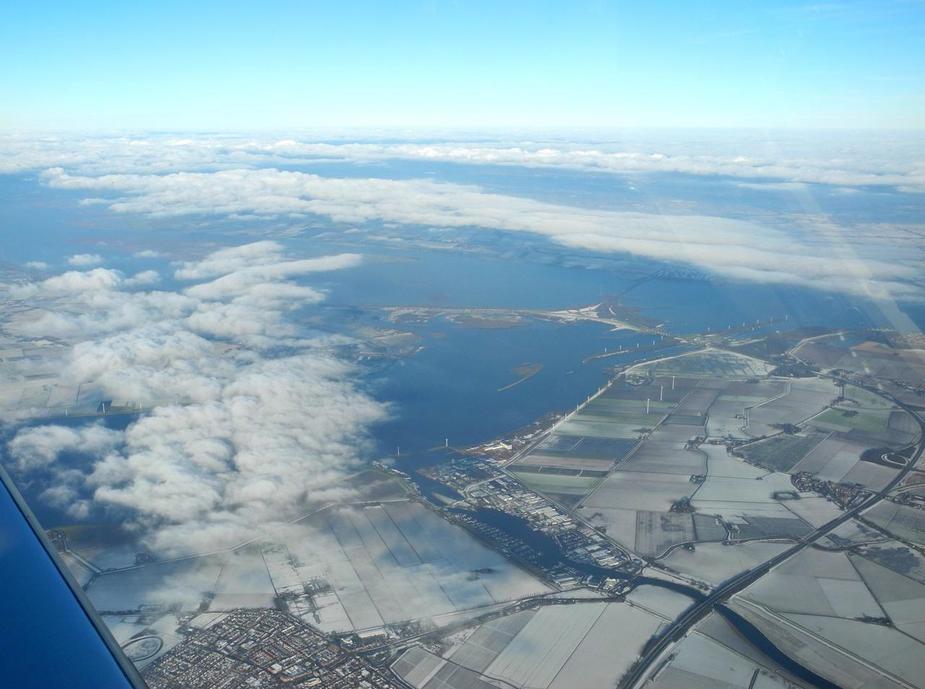
After this, as expected, we came on top of a status cloud layer, so no more photos. Dutchmil cleared us direct to REVLA, then Bremen cleared us direct to BOGMU, which is the arrival point for southwesterly arrivals when runway 25 is in use at Luebeck. Here we are, with the procedure set up.
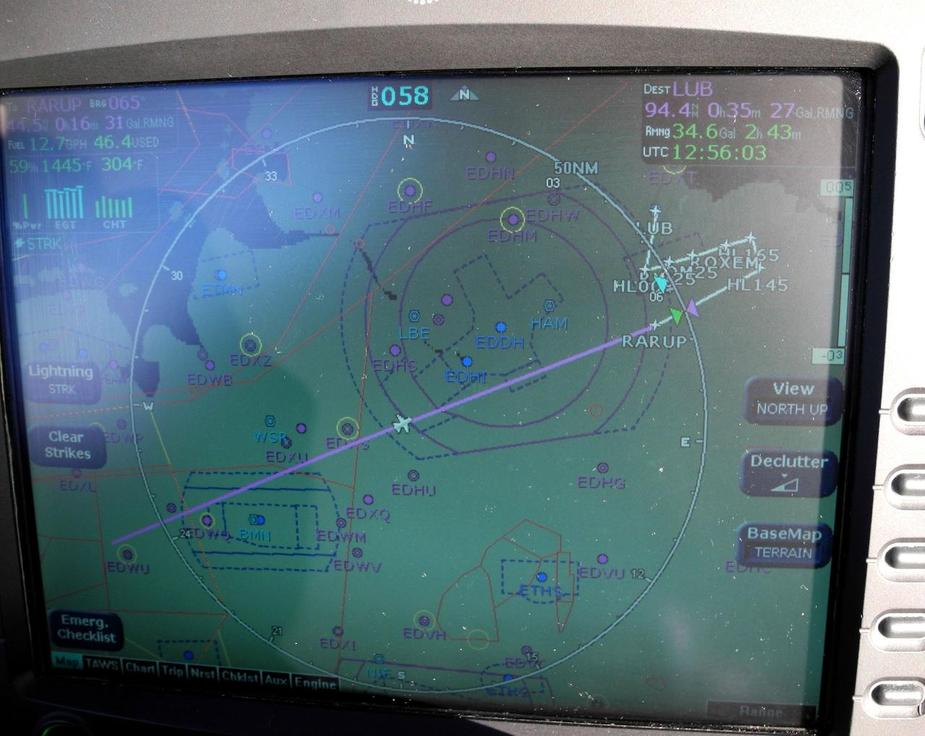
Bremen descended us down towards the ILS. After the instruction to descend to 5000 feet, I noticed that this was really a bit too soon and that it would put us squarely into that stratus layer which looked like it would contain some mean amount of ice. So just before desending into the cloud, I asked ATC if we could just maintain present altitude for some time. This was approved so we just continued on at 5700 feet. Probably no problem for the controller, but still some good cooperation on his side.
Just-in-time for the glidepath intercept, we descended further down and through the stratus layer. A busy time. Not only did we pick up some ice and had to keep and eye on that. We also caught a busy moment at Luebeck airport, with a Lufthansa Citation doing practice approaches and a resident Kingair also coming in for landing. We were asked to accelerate to 150 knots once on the 12-mile final and then to slow down to 120 at 5 miles. Worked out well. Touchdown was after three hours and fortyfive minutes.
At our hangar, the police awaited us for a brief look at our ID cards, since we were “coming from outside Schengen”. 
Careful about that Zeebrügge spelling, you never know how you stir up old and not so kind memories 
@ Jan – You mean better spell it Zeebrugge? 
BTW great report Bosco – thanks for sharing with us
Yes indeed, Nobbi, or – to be consistent with the bigger city nearby – Seabruges.
(not entirely serious, of course, but if I chide the Anglophiles for saying Bruges instead of Brugge there will be no end to argument, and to little use).
Ridiculous as it may sound, there still some around who associate the umlaut – a typical element of German language, absent from Dutch and French – with the WW2 occupation even if almost 70 years have passed now.
To remain on topic: another great report, Bosco, thanks once more. A hop from Cherbourg to Alderney is the closest I can think of coming.
Outstanding trip report – excellent pictures and great commentary.
I look forward to reading more during the year.
I always like the pics in your reports Bosco – thanks!
Great report, thanks.